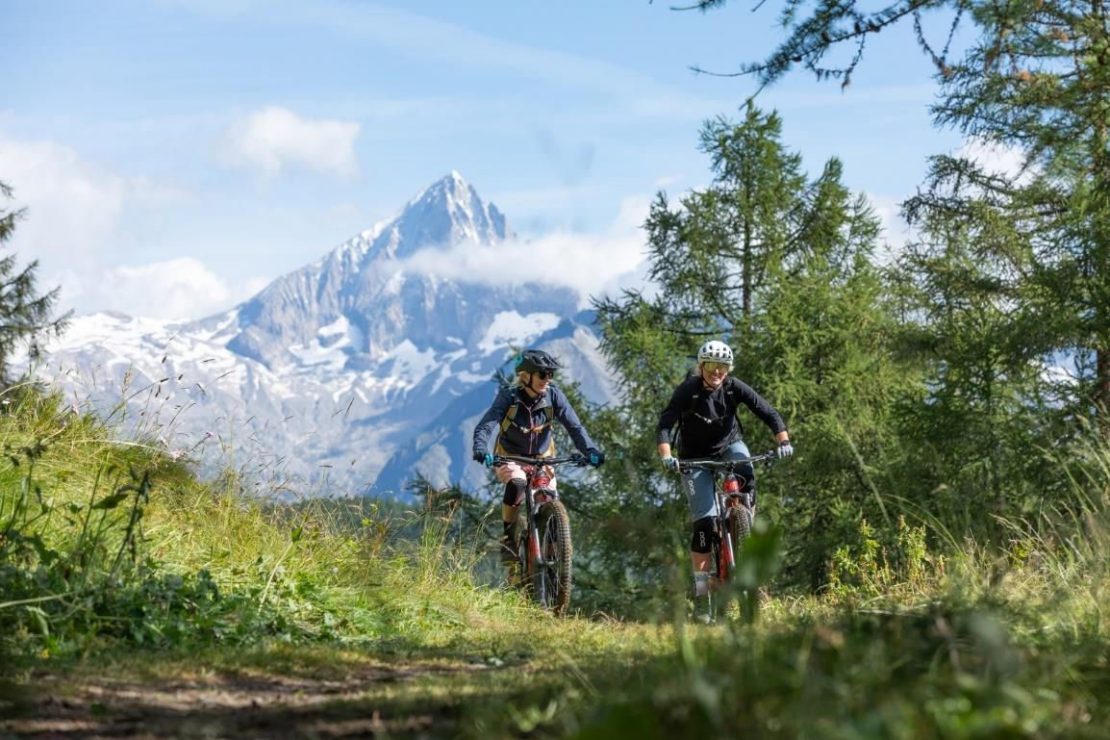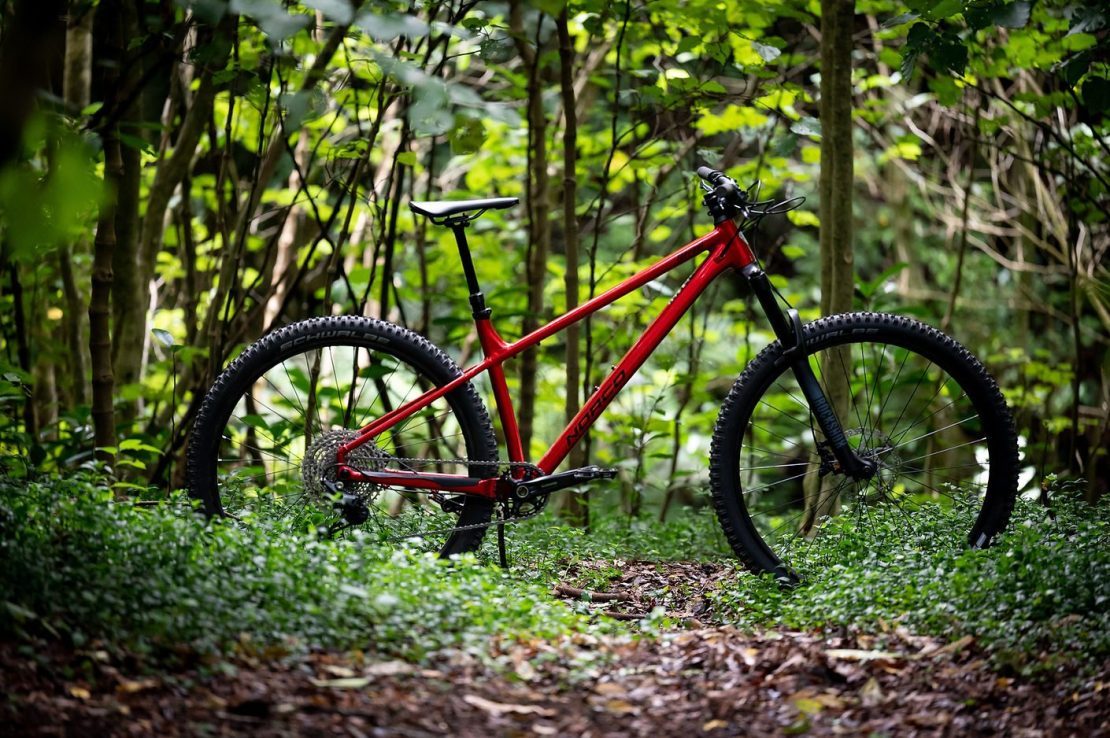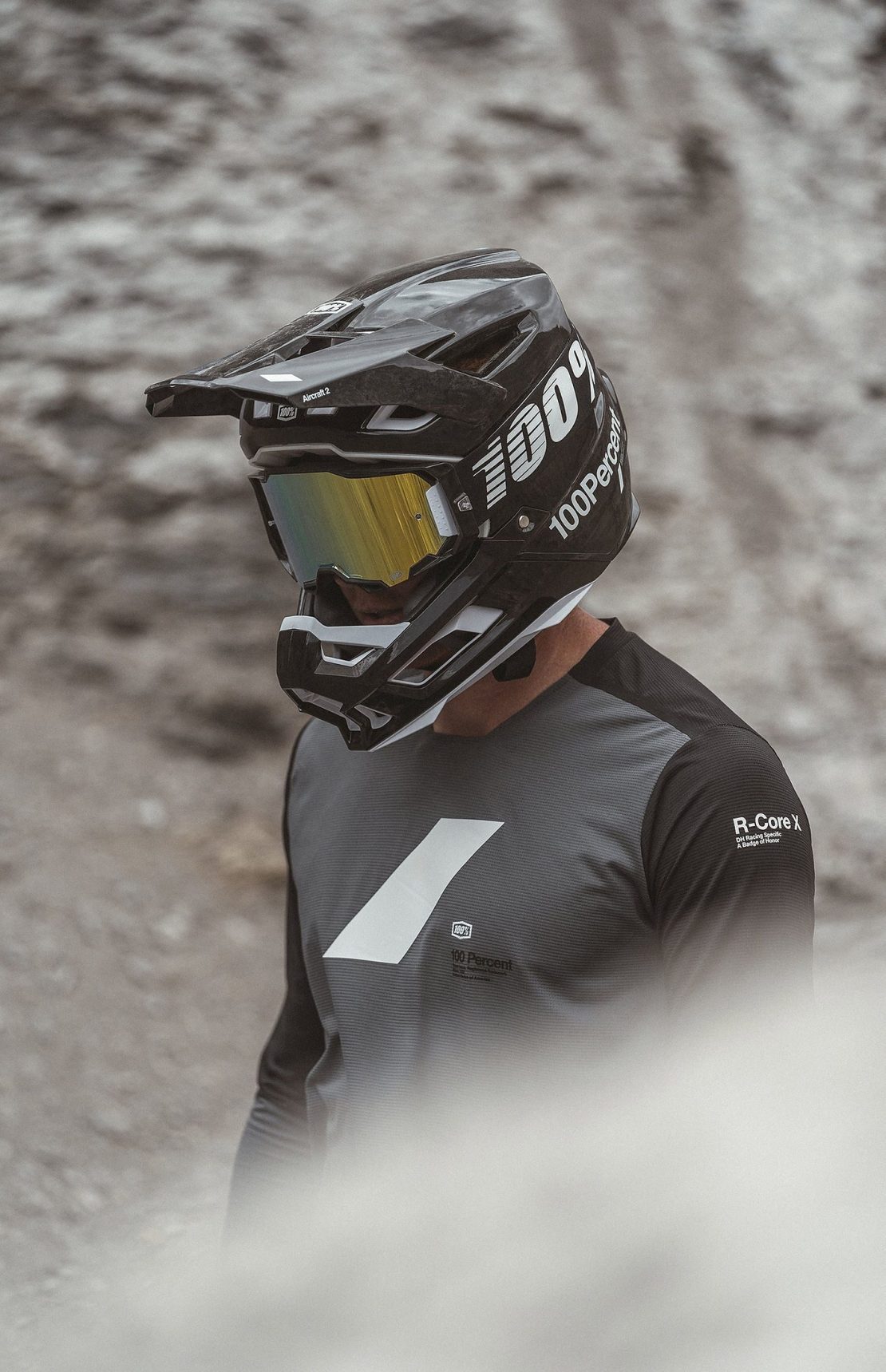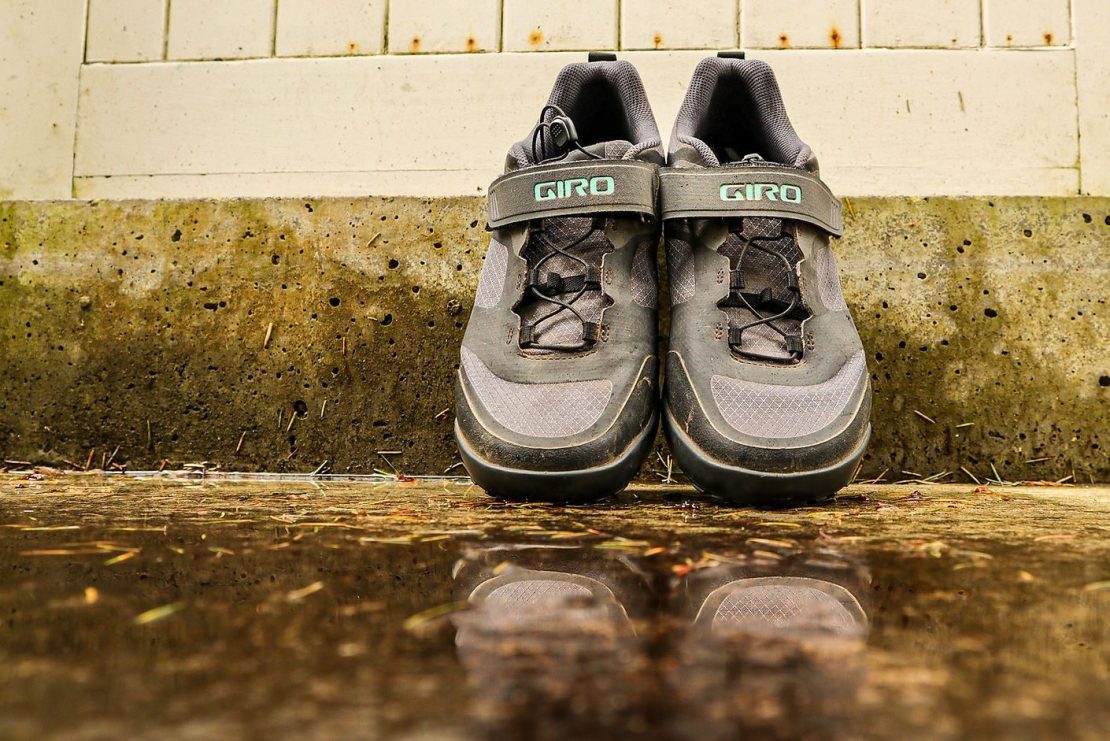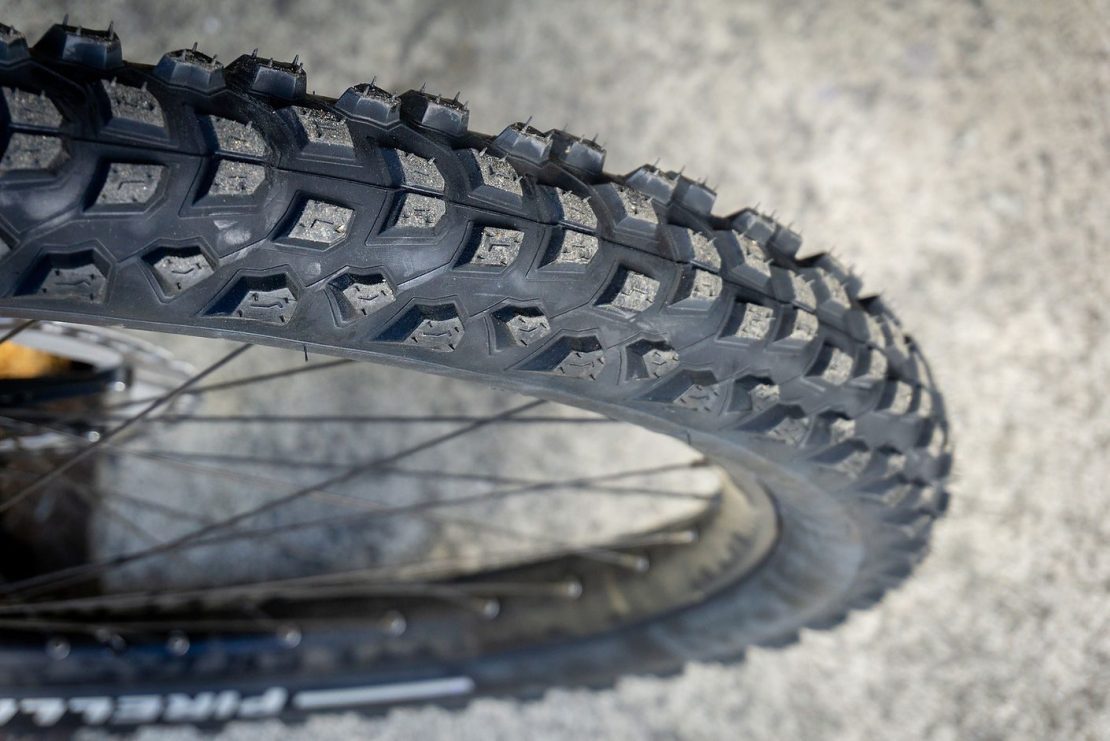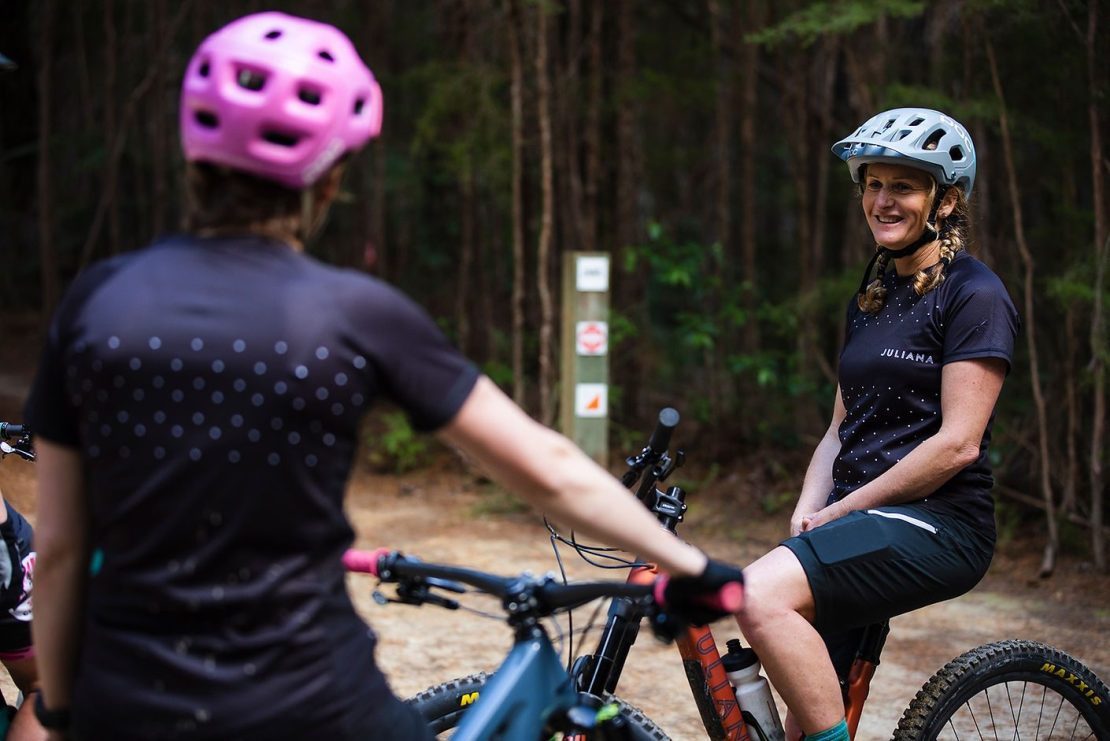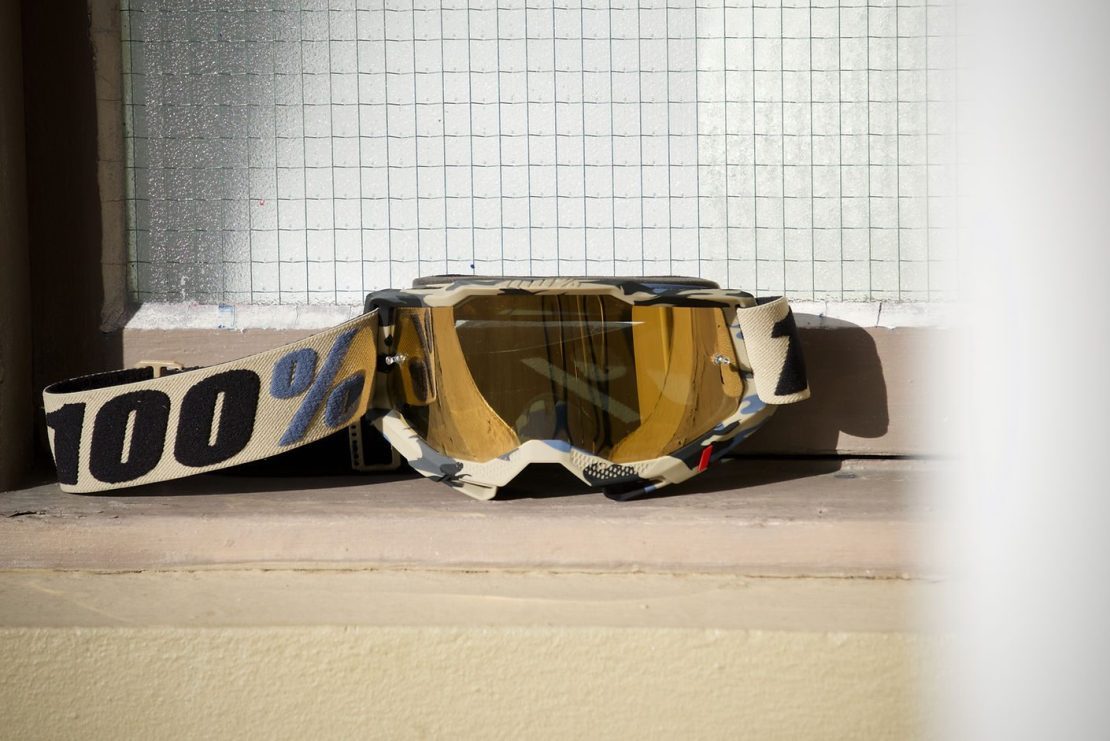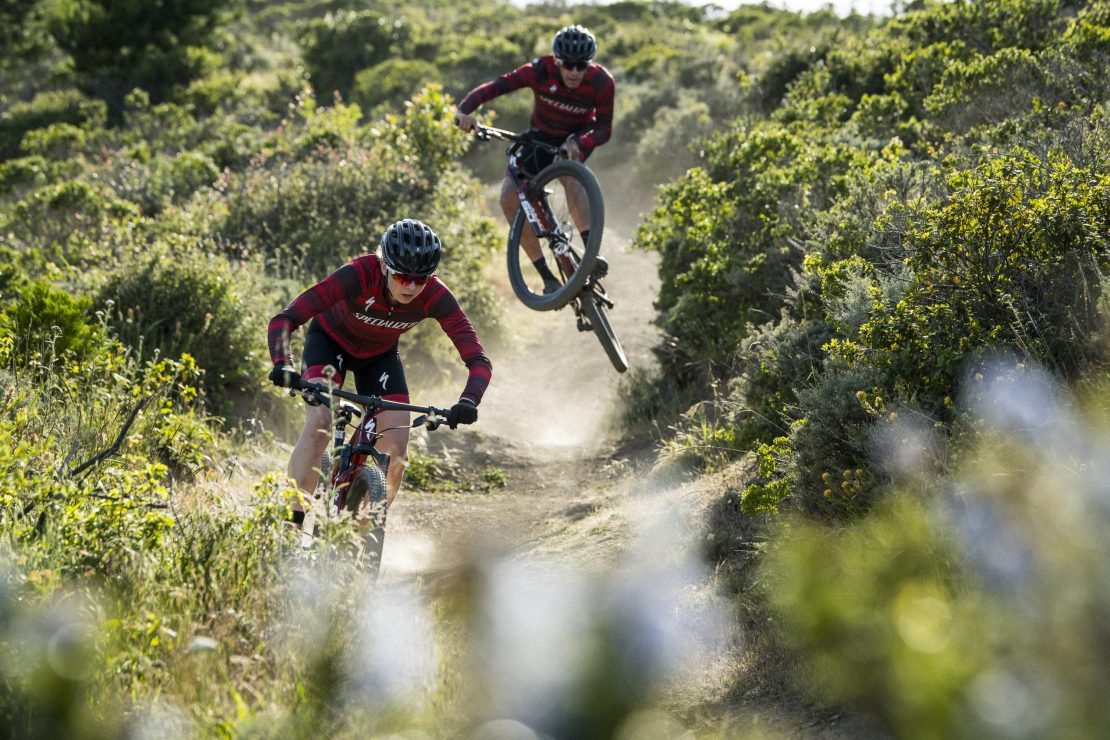Release: Bosch's new Tour+ Riding Mode
The new Tour+ riding mode from Bosch eBike Systems offers pedelec riders dynamic, continuous support depending on their own effort. This eliminates the need for manual switching between the common drive modes. The new riding mode is designed in particular for sporty rides: With Tour+, eBikers pedal a little harder on flat routes than with the familiar Tour mode. By increasing the rider's own effort, the riding mode saves energy and extends the boundaries for extended excursions. So, Tour+ challenges sporty riders and rewards their slightly greater effort with increased range.
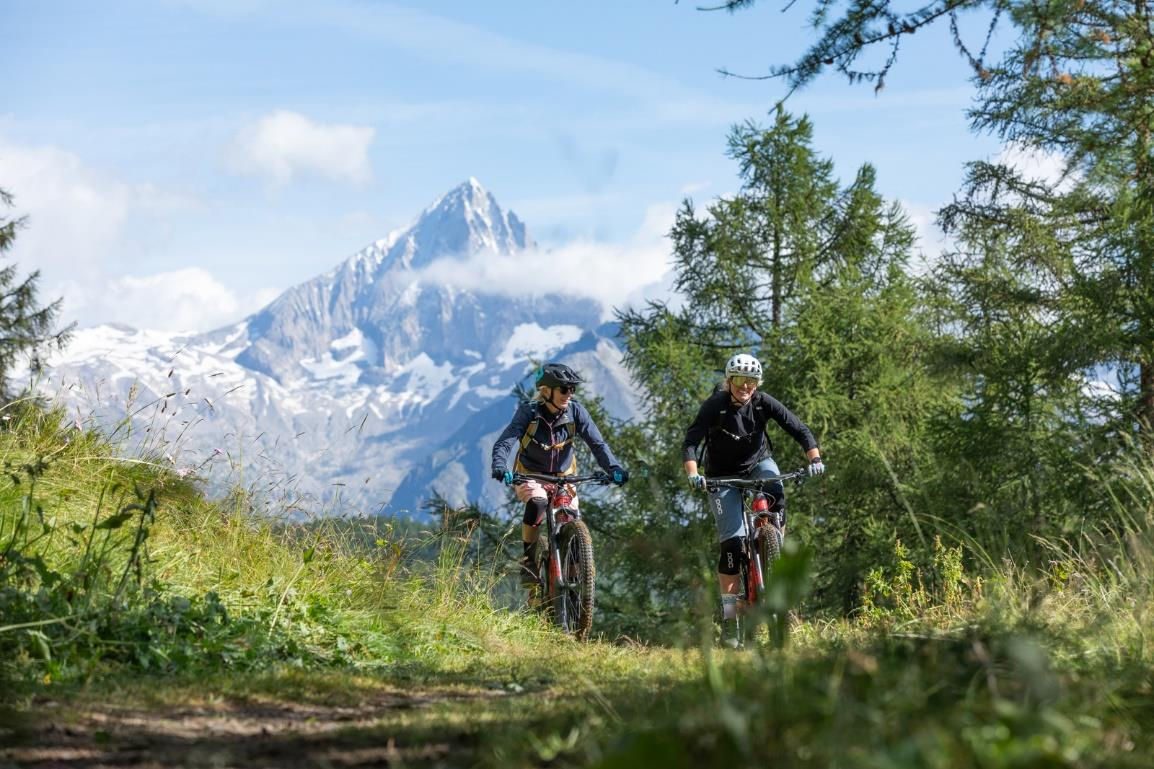
Natural riding sensation due to sensitive motor support
Sensors on the motor measure important riding data more than 1,000 times per second, from which the Tour+ riding mode derives the optimum support for eBikers. The additional power is sensitively dosed to create a natural riding sensation. The degree of support varies dynamically and continuously between the Eco and Turbo drive modes. Tour+ allows eBikers maximum comfort in different riding situations and ensures that they can fully focus on the ride.
“With the Tour+ riding mode, eBikers who like to exert themselves a little more and put more of their own effort into pedalling get a comfort-oriented and range-optimised support level”, explains Claus Fleischer, CEO at Bosch eBike Systems. “There is no need to switch between the familiar modes, riders can devote themselves completely to their eBike experience and enjoy maximum riding pleasure. The system supports a little less on flat and easy routes to increase range. If needed, the support is adjusted situationally based on the pedal pressure to overcome inclines.”
The Tour+ riding mode is available from July 2021 for eBikes with the Bosch Performance Line CX from model year 2020 and derailleur system.
Release: Norco's Three new eBikes
Norco’s VLT E-Mountain Bikes give you more of everything you love about riding, and with our completely redesigned Range, Sight and Fluid VLT models, we’ve got all types of rides covered with the latest Shimano EP8 drive system, choice of frame materials and the freedom to choose your ideal battery capacity. With 30 possible combinations, our VLT E-MTBs let you call the shots and get extra out of every ride.
FRAME MATERIAL CHOICE
The Range and Sight VLT’s are available in Carbon and Aluminum and the Fluid VLT is available in Aluminum.
BATTERY CAPACITY CHOICE
With three proprietary battery options available featuring future-proof 21700 lithium ion cells for maximum energy density, allowing you to custom-select your ideal capacity from 540Wh, 720Wh or massive, industry-leading 900Wh.
EASILY-REMOVABLE BATTERY
Proprietary batteries remove and install in seconds with a single onboard tool for off-bike charging, bringing along a spare, or customselecting the capacity you need for the ride you’ve planned.
SHIMANO EP8 DRIVE SYSTEM
Shimano’s most advanced EP8 drive system is spec’d through the entire Gen 3 VLT lineup. It’s 380g lighter than previous models, features 85Nm of torque with increased efficiency, and is rider customizable using the E-Tube Project app.
E-OPTIMIZED COMPONENTS
Every VLT is spec’d for the rigours and added mass of E-mountain biking, including E-certified forks, oversized 4-piston disc brakes, robust 29” wheels with reinforced spokes and freehubs, and grippy tires featuring supportive sidewalls.
RIDE ALIGNED™
Norco’s exclusive Ride Aligned™ Design System matches each VLT E-MTB to the human who rides it. Rider-first geometry and suspension kinematics combine with custom fit and suspension tuning using the Ride Aligned™ Setup Guide to provide unparalleled, personalized performance from day one.
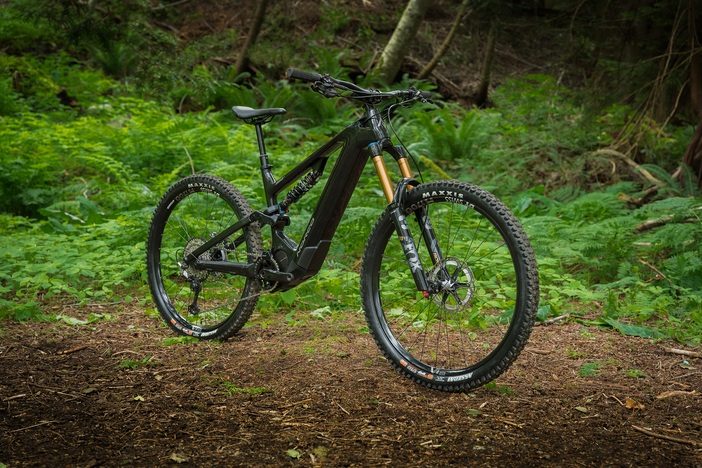
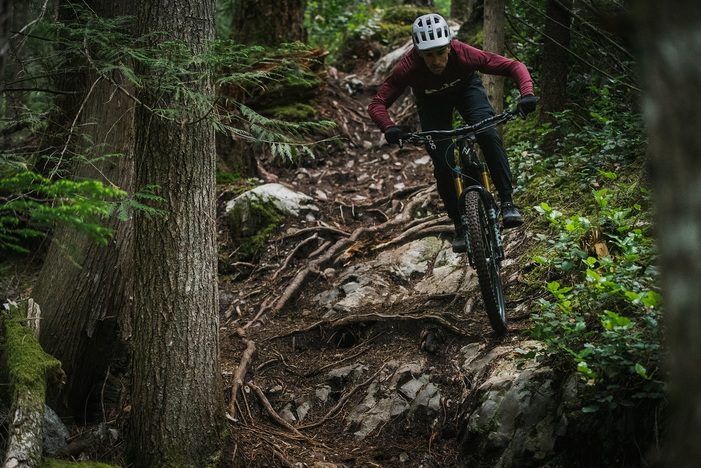
NORCO RANGE VLT
INTENDED USE: ENDURO & BIG MOUNTAIN
FRAME MATERIALS: CARBON OR ALUMINIUM FRAME AND SEATSTAYS, ALUMINUM CHAINSTAYS
FRAME/WHEEL SIZE: S, M, L, XL / 29”
SUSPENSION TRAVEL: F: 180MM, R: 170MM
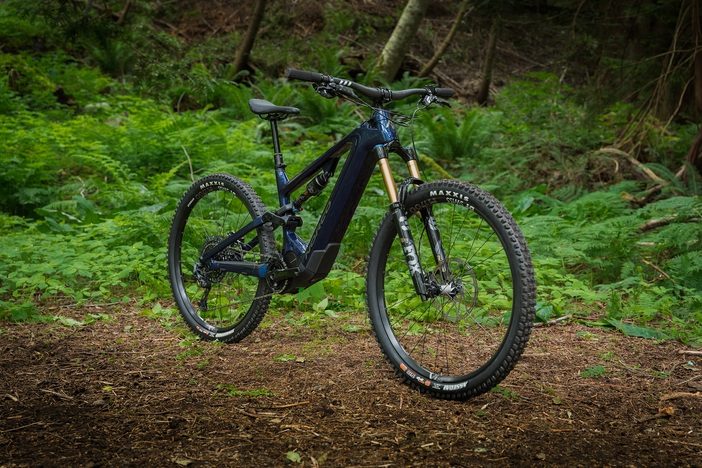
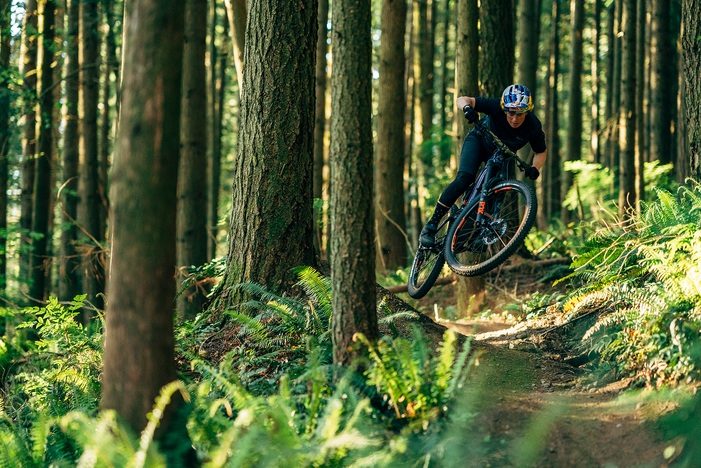
NORCO SIGHT VLT
INTENDED USE: ALL MOUNTAIN FRAME
MATERIALS: CARBON OR ALUMINIUM FRAME AND SEATSTAYS, ALUMINUM CHAINSTAYS
FRAME/WHEEL SIZE: S, M, L, XL / 29”
SUSPENSION TRAVEL: F: 160MM, R: 150MM
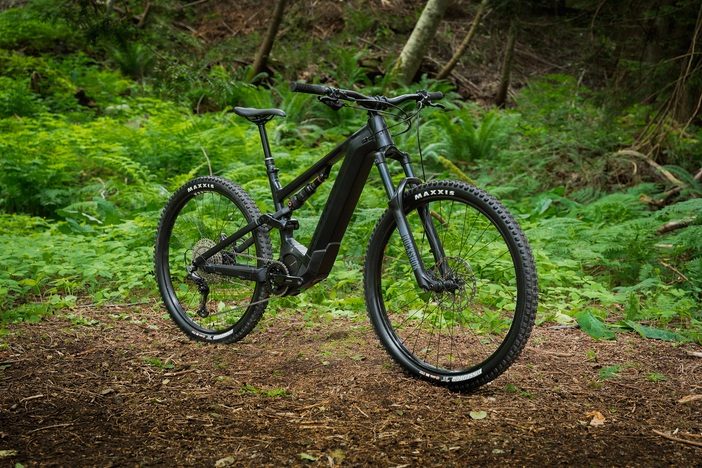
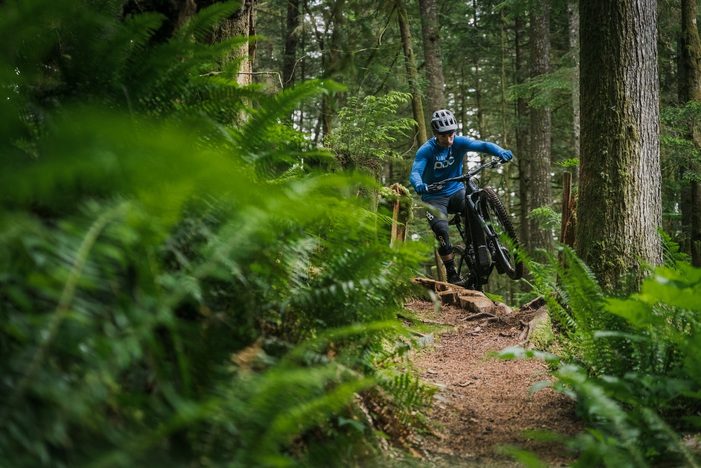
NORCO FLUID VLT
INTENDED USE: TRAIL
FRAME MATERIALS: HYDROFORMED ALUMINUM
FRAME/WHEEL SIZE: S, M, L, XL / 29”
SUSPENSION TRAVEL: F: 140MM, R: 130MM
Find out more here.
Review: Norco Torrent
Hardtails. It’s where we all started. Whether it was a Raleigh 20, a PK Ripper, or a 90s Diamondback, almost universally we all started shredding on a hardtail bike of some description.
However, with the wave of decent full suspension bikes coming to market from the 2000s onwards, most regular mountain bikers have moved to a full suspension bike being their usual trail machine. Despite this, the diehards have remained - outliers; trolling us on their nimble single speeds; others cajoling us on their 26” wheeled fluro-accented 90s machine, with clothing to match; and the odd hardcore XC racer, rolling up on the starting line. Some even manage to hit the trifecta and achieve a higher level of consciousness by occupying the Venn centre of those three circles in one sweet rigid moment. But, if you thought for a moment you didn’t fit any of those categories - you like gears and on-trend fashion, and have no interest in racing - the good news is there is still a place in hardtail nirvana for you. The mountain bike industry is always on the hunt to be able to provide exactly what you are looking for and, as such, a new category has emerged in the last few years that caters to those who might like the aggressive riding characteristics of a slack full suss, but without some of the drawbacks such as extra cost, maintenance and lack of pumping ability.
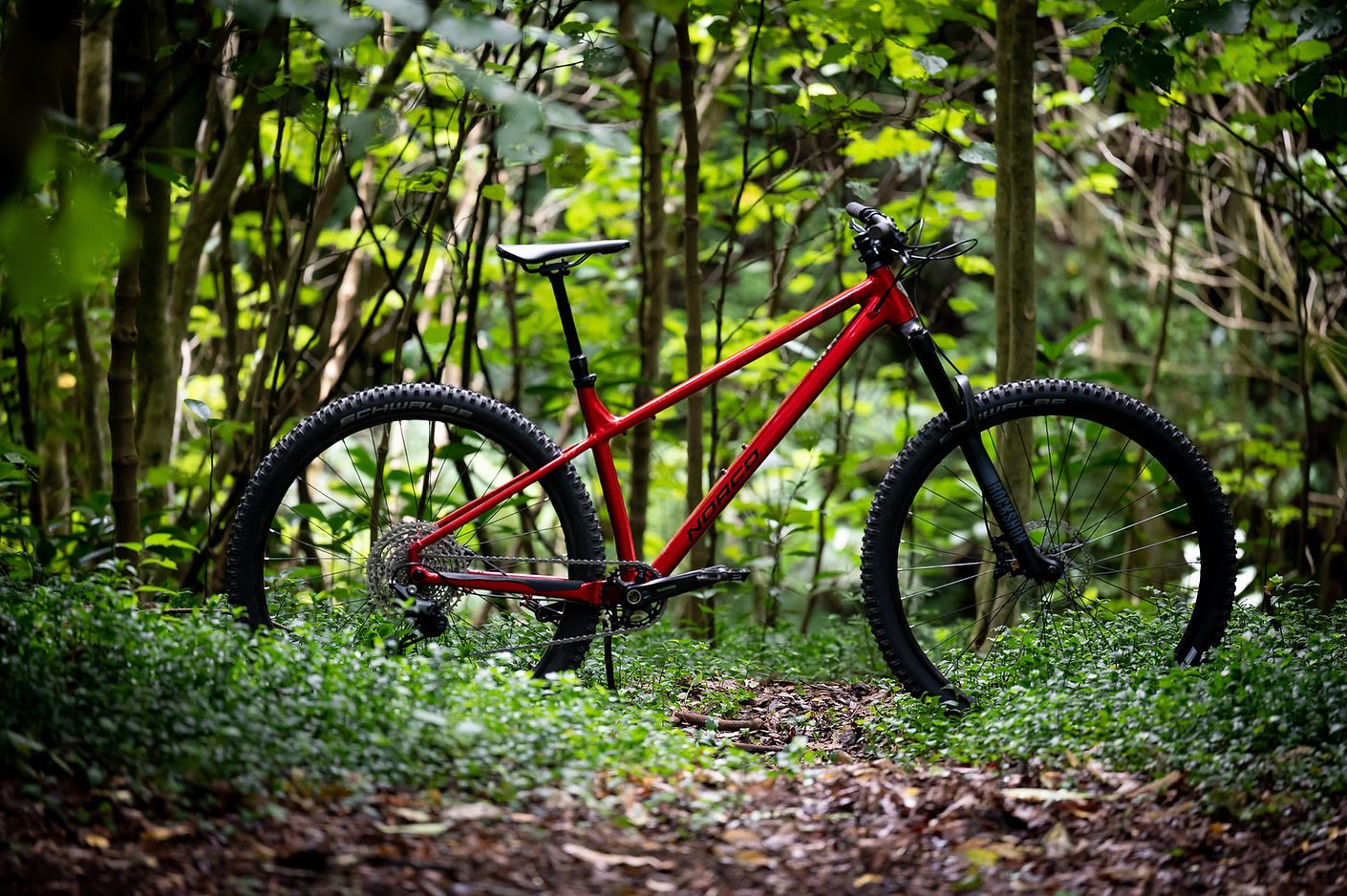
The new Norco Torrent is one of these bikes - and we’ve had the chance to spend some time reviewing it. The Torrent comes in two frame materials (steel or alloy) and at two price points for each frame. The A2 comes in at $2499, the A1 (tested) at $2999, the S1 at $3299, and the flagship S1 at $4499. The steel frame is also available as a frame only for $1099. Like most bikes in the current climate, stock is extremely limited so you may have to ring around a few shops before you are able to get your hands on one.
First off, yes, it’s true - and now officially, scientifically proven in the NZ Mountain Biker laboratory - red goes faster, and therefore this Torrent is damn near flying. It’s got that same kind of wow factor that made your eyes pop out of your head when you unwrapped your first bike on Christmas day. You can’t help but smile at this bike. And, maybe that’s a bit of a clue as to what this bike is all about; hardtails have a way of harking us back to simpler times, before we began obsessing about what difference five psi might make, tokens in our shocks, and if a nitrogen fill would actually make us faster. No. hardtails force the rider to remove themselves from any such trivialities, name them for what they are (“bull s%*t”) and let their own riding skills stand for themselves…. Or not. It’s an approach to riding that is both freeing, and terrifying.
But enough waxing poetic. What is the new Torrent all about? Well, in the case of aggressive hardtails, it’s all about the numbers, and numbers that have been usually associated with that mad friend you grew up with who was always putting an insanely long travel fork on his hardtail (eventually he snapped his headtube right?) but, damn, he could ride. We all had a friend like that. Well, maybe that mad friend was on to something, because the aggressive hardtail category is now a real thing.
So, let’s start with a few of the features of the Torrent. First up, on the A1 we’ve got the 150mm travel RockShox 35 Gold fork, that’s matched to a 64 degree head angle. By way of example, the Norco Sight, a bike aimed at EWS/Enduro riders, has a head angle of 63.5, so that’s the kind of territory you are in. Our large has a 480mm reach, 76 degree seat tube, and a 425mm rear centre (chainstays). These numbers might not mean a whole lot to you but for a hardtail they are right down the aggressive end of the spectrum.
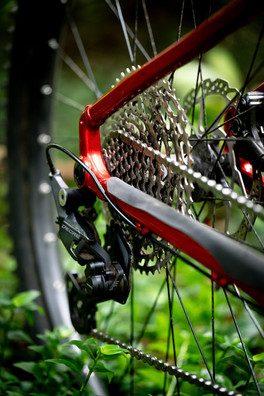
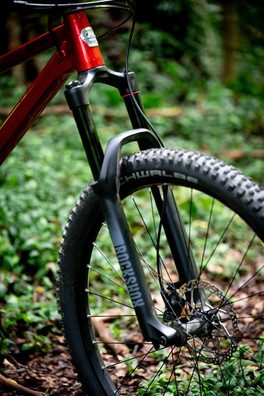
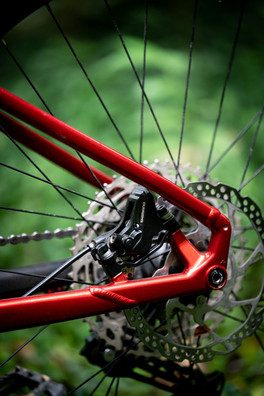
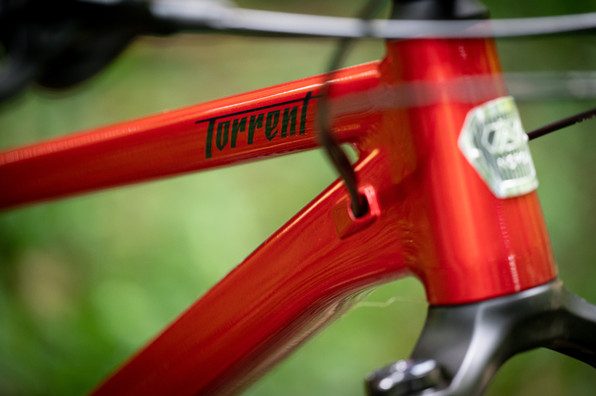
The Torrent is rolling on Stans Flow D 29” rims, (pre-taped, and with Stan’s valves and sealant in the box we got this rolling tubeless in about 10 minutes) with Schwalbe Hans Dampf rubber. In the drivetrain, the Torrent gets the value oriented new Deore 12 speed 10-51 1x drivetrain. And lastly, keeping things under control, are the Shimano 4-pot 420 brakes. You also get a Trans-X 150mm dropper and a Fizik Taiga saddle all for $2999.
After a relatively simple build, it was out into the streets for a quick rolling check and feel. Instantly, the thing that popped out to me was how similar to my last long travel full suspension bike this Norco felt in terms of overall position in the cockpit. Nice wide 800mm bars, and that visual cue of where the front wheel sits out in front of the stem - it all felt like it was trying to mirror the experience of a long travel full suspension bike in terms of rider body position. A great start!
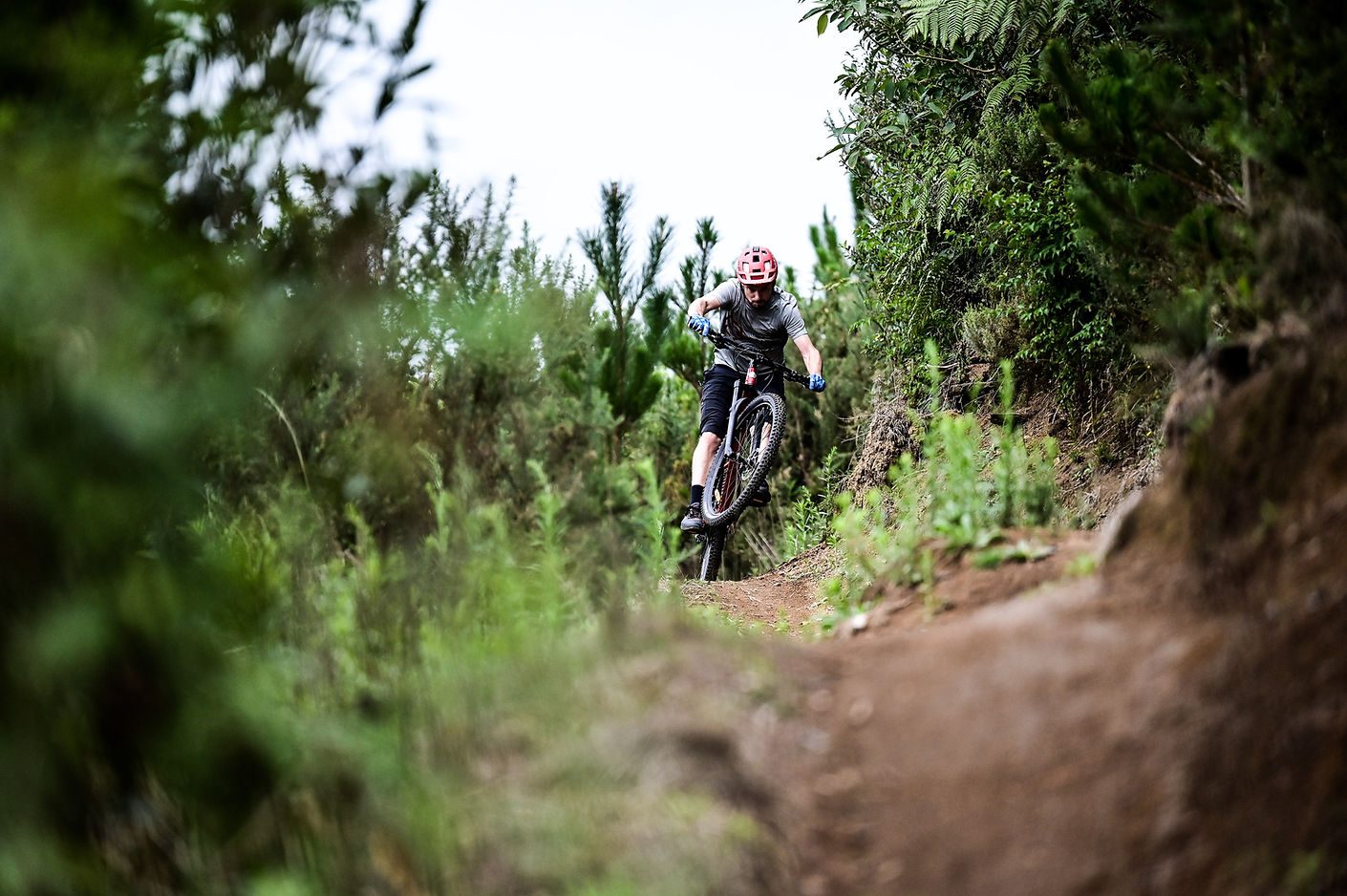
Out on the trail and the thing that hardtails beg you to do is get up out of the saddle and sprint. Every little climb, every little straight, you know that any effort you put in is rewarded with instant acceleration. Caution, you may start referring to your full-suss bikes with phrases like ‘Mr Blobby’ or other such names, because this thing just wants to go. But any hardtail can say that. The thing with the Torrent, is that it wants to keep going faster when the trail turns down. If you’ve moved from an XC oriented hardtail to a more trail oriented full suss (a pretty normal progression in bike ownership) you might not be aware how much geometry and tyre choice factored into the feeling of confidence that your new long travel bike has given you. That’s what the Torrent has tapped into here. All those things that make modern full suspension bikes great, but in a hardtail package. So, when the trail turns a bit techy, gets a bit of flow, or you see a few jumps, whoops, opportunities to manual etc, you don’t for a moment think “darn I wish I was on my full suss bike so I could enjoy this bit of trail” - you just rad on through it!
Of course, there are limitations to this. Firstly, decent size jumps. No matter how good your technique is, unless you are riding perfectly sculpted dirt jumps, you’ll still be coming back down to earth with a fairly decent impact on a hardtail. There is no way to avoid this, but good technique can make it the best version of what it is - you and a hunk of metal hitting the earth at 30 km/hr. On the plus side, knowing this is imminent, and also knowing you’ve got new abilities to accelerate quickly as you approach the takeoff, you might actually find yourself clearing jumps you didn’t before, and focusing more on your actual jumping technique. For better or worse, this bike won’t hide anything. If you can jump well, you will jump well on the Torrent, if you can’t - and you need your squish to cover your poor technique or habit of always landing on the knuckle - the Torrent won’t save your ass from your poor technique.
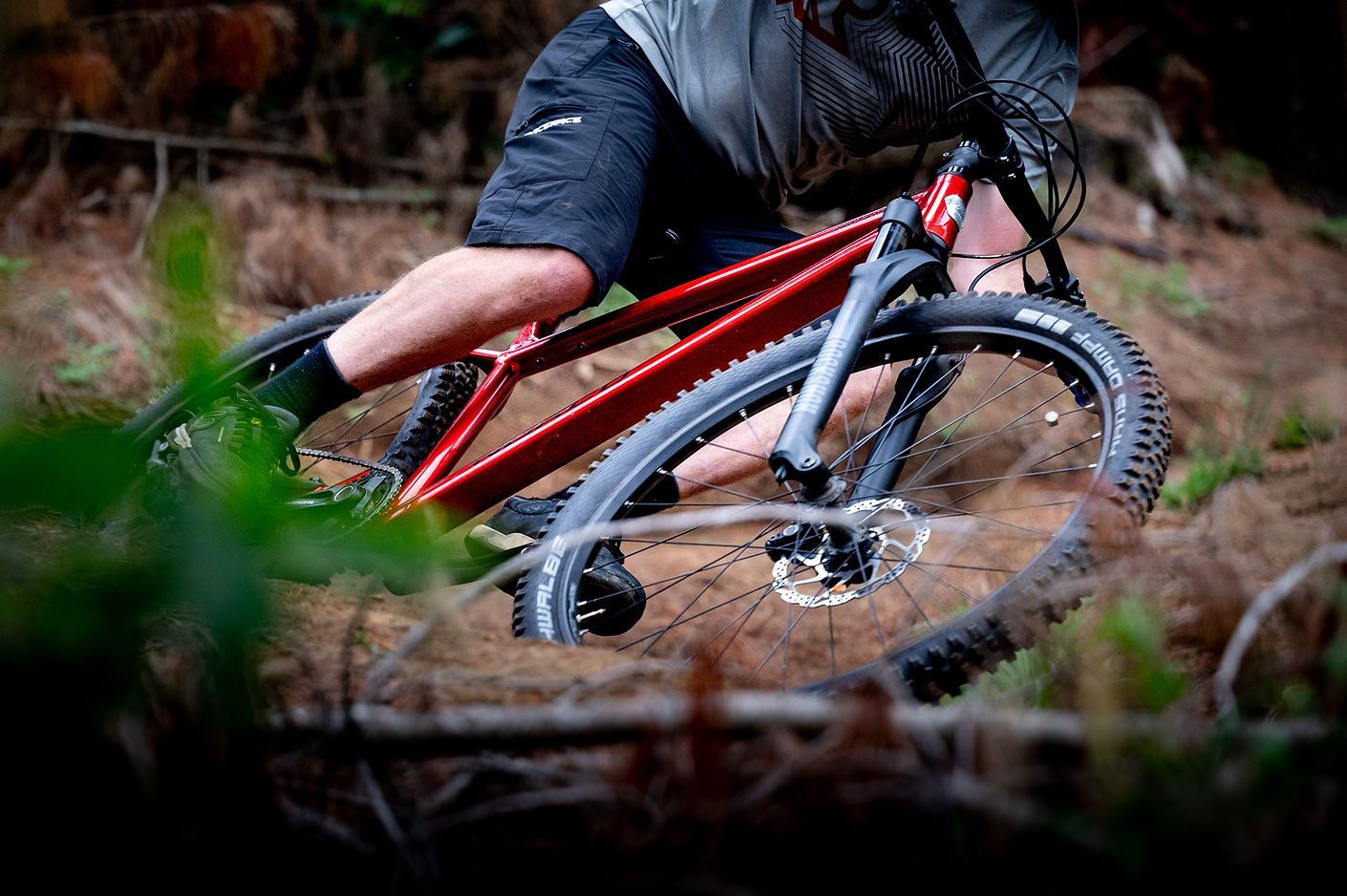
But the sweet spot for the Torrent is surprisingly large. On singletrack that isn’t insanely rough, has twists and turns and built in flow, you’ll be surprised just how good it feels. In fact, if you know how to pump, you’ll be reminded of just what you give up by going to a full suss bike in this area. A flowy singletrack trail with lots of rolling undulations and opportunities to make speed through pumping is what this bike was made for, and you’ll be surprised just how fast you might find yourself going as you use the trail to create speed - and that is a real smile inducing way to ride.
We would love to test the steel frame version to see if we could really ‘feel’ the fabled compliance of steel vs alloy, but the reality is the 150mm of suspension and chunky tires are going to absorb most of that, so it might be hard to argue for the steel option based on performance. However, we also know steel bikes are just their own version of sexy - and you’ll get extra street cred to boot - but alongside that, they also have great qualities in terms of fatigue resistance (think of all the big hits you’re giving this thing!) so, in saying that, for an extra $300 the entry level steel model might just be our pick of the bunch.
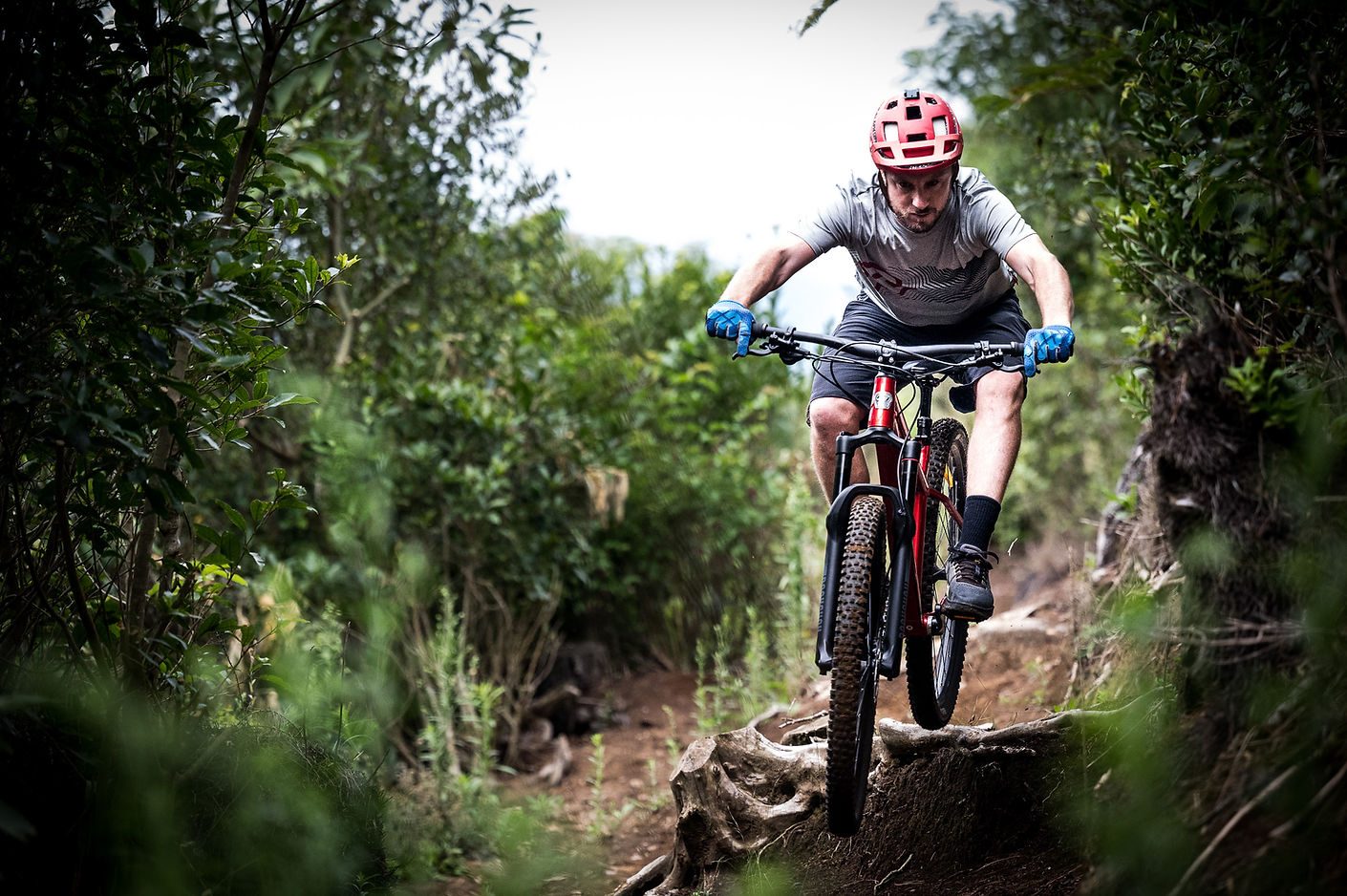
Despite being impressed overall, there were a few minor things that didn’t quite work out. The internal cable routing rattled, the Fizik seat just didn’t seem to fit our bottom shape, and though thin grips seem all the rage, these ones seemed just a bit too thin and were really just kind of hard. Those are all pretty minor changes though.
The spec on the A1 model we tested was the no frills option, and that helps keep the price under $3k, but it doesn’t mean there is a lot we’d change. In fact, the 12 speed Deore groupset is sublime. You also get Shimano hubs as opposed to some non-branded cost saving option, and the Stans rims held up well to the abuse we put them through. The 420 Shimano 4-pot brakes don't have quite the same refined lever shape or overall shininess of their higher priced siblings, but they don’t lack for power either. When you need to drop the anchors, they do the job just fine. Speaking of the jumps and drops you’ll be wanting to do on this, it’s when you start to trust the geometry and ride with more and more confidence that you also realise the limitations of the 35 Gold fork. It doesn’t have the damping refinements of it’s more expensive brethren such as the Pike or Lyrik, which is a shame as you have to go all the way up to the $4499 top spec model to get a better fork. It’s not that the fork isn’t up to handling itself with big hits, it's just that it's a simpler damping system all together. This means that to get the sensitivity on the small impacts you lose some of the control at managing the big impacts, which is a shame, as getting rowdy is what this bike is built for. Of course, the simple solution is; if you’re focusing on riding rowdy, set it up accordingly and it will take care of you just fine. Switching out a fork isn’t as easy as switching out the grips, but if this bike had something like a Pike on it, we think it would have been a home run.
All in all, the Norco Torrent is an impressively fun bike to ride, with a solid component package that will impress you with just what modern hardtails are really capable of. It’s not for the dirt jumpers nor the hucksters, it’s a trail bike that will go anywhere and everywhere and make you wonder why you’ve been carrying that saggy rear shock around with you for so long.
Distributed by Advanced Traders | RRP: $2,899
Words: Lance Pilbrow
Images: Julia Moore-Pilbrow
Release: 100% Aircraft 2
Aircraft 2 Has Landed. The evolution continues with our ongoing development and advancement of helmet technology. Created with world-class performance in mind, our proprietary Smartshock® Technology works inconjunction with our Patent Pending injection molded chin bar and Multi-Density EPS foam to keepyou safe and extend performance all day long. Elevate your performance with the Aircraft2.
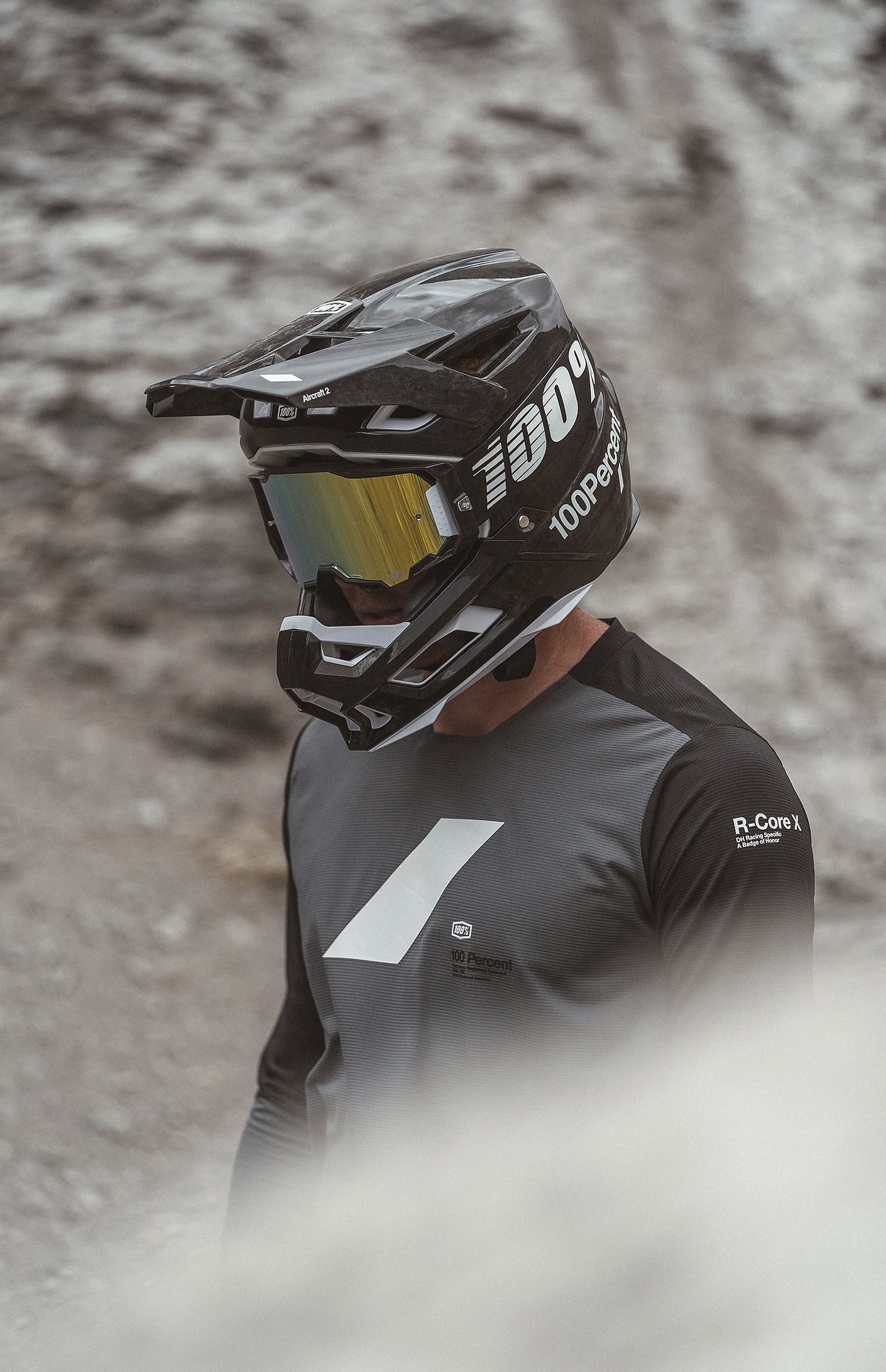
Features
-
Carbon Fiber shell with Patent Pending injection molded chin bar integration
-
14 point Smartshock® Rotational Protective System
-
Dual Density EPS injection molded with polycarbonate in two size-specific molds
-
Massive airflow with 20 oversized ventilation ports
-
Multi-point adjustable visor designed for maximum vision and goggle stowage
-
Washable, moisture-wicking anti-microbial suede comfort liner
-
D-Ring buckle for a secure fit and maximum security
-
Certified ASTM (F1952-15), CPSC (16 CFR 1203), CE (EN 1078:2012+A1:2012)
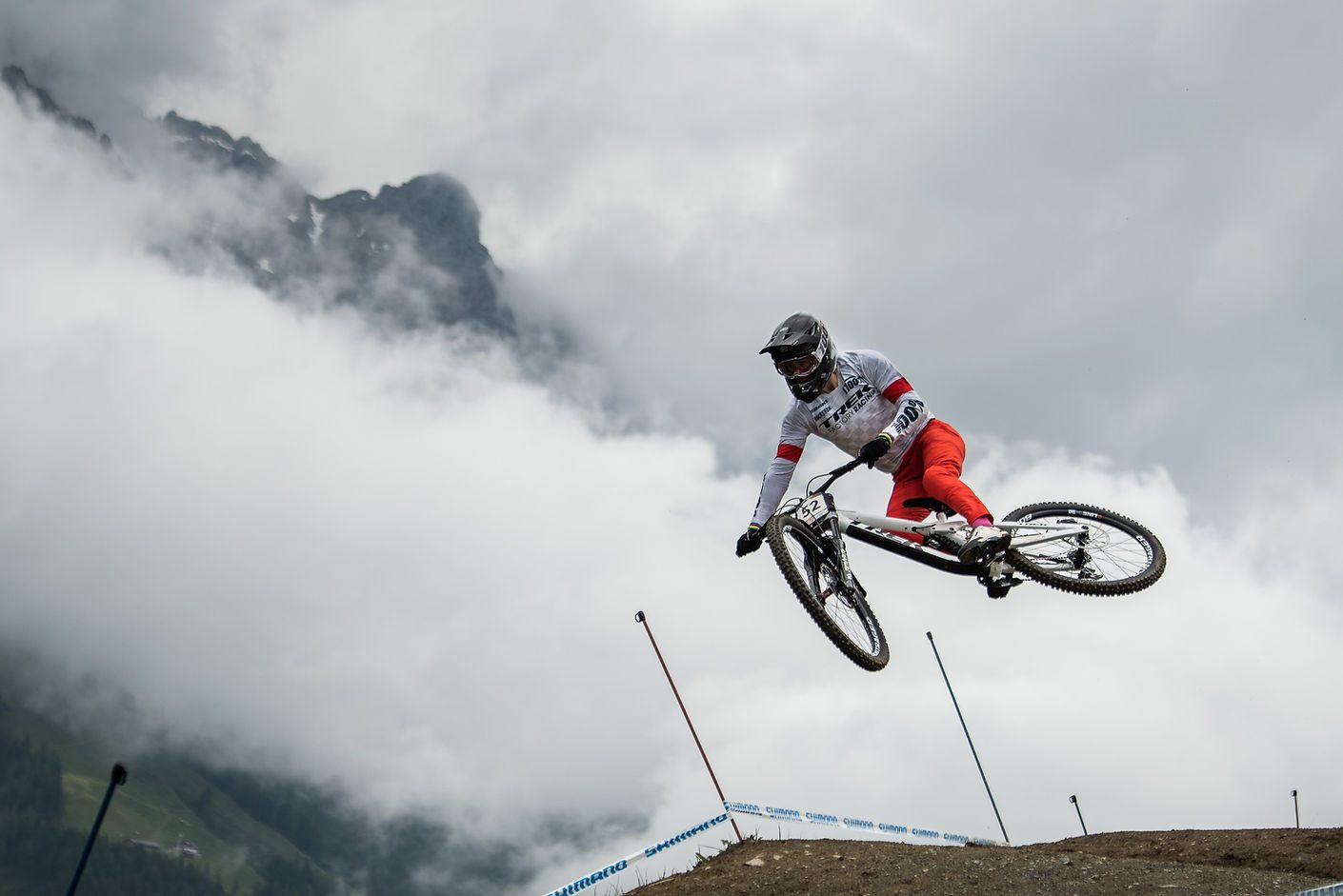
Review: Giro Ventana Women's FastLace Shoe
It had been a while since I’d ridden my MTB. Throw in shoulder surgery rehabilitation and COVID, and you have exactly six months. Needless to say, I needed all the flare and sparkle a new pair of shoes could bring me. ‘This ain’t gonna be pretty’, I thought to myself as we ran the gauntlet that is South Auckland traffic, and escaped to Whakarewarewa, Rotorua. Pooch, hubby, bike, not to mention the new kicks – sorted!
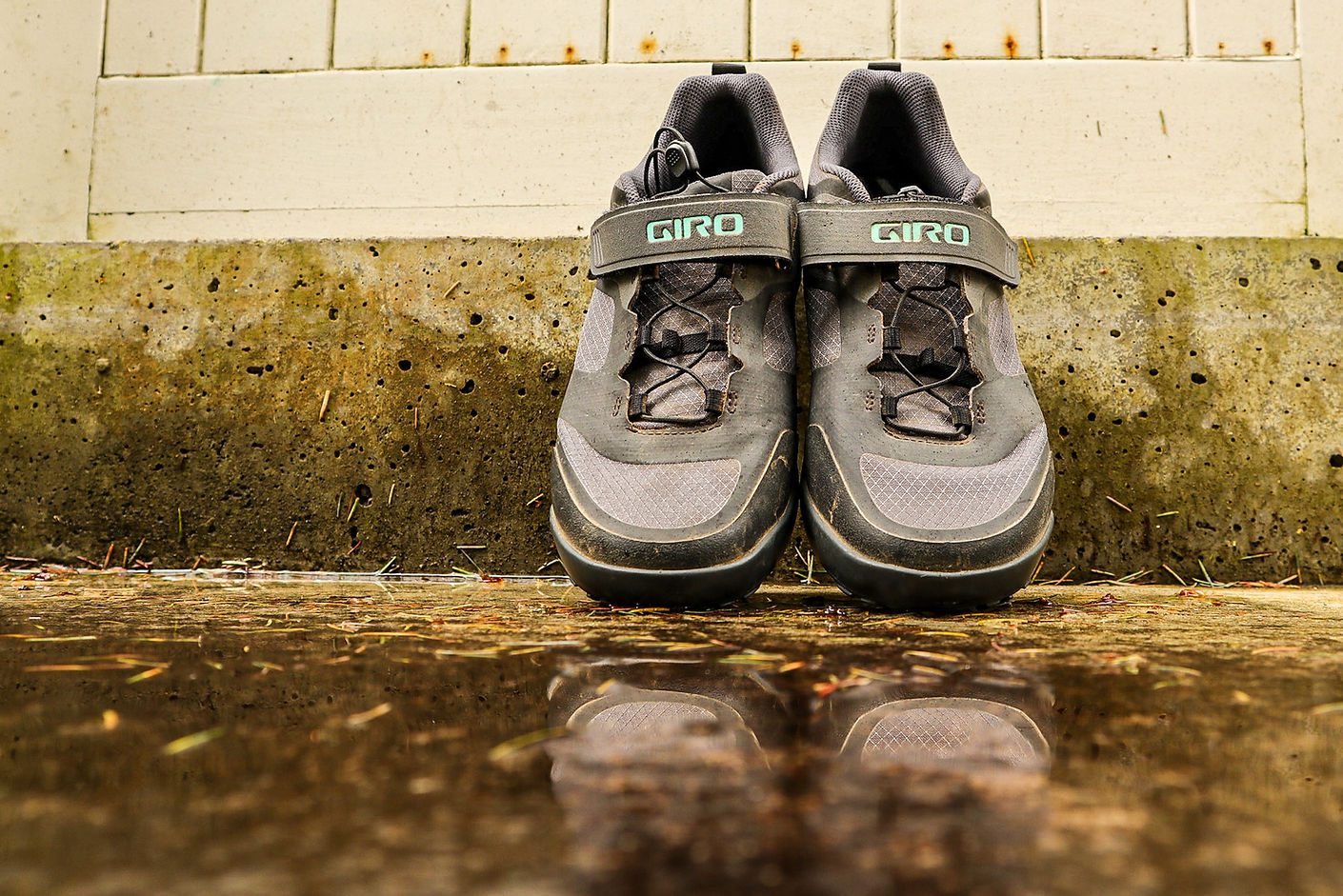
With my head full of noise about how my shoulder was going to hold up, I didn’t need foot drama added to the mix – so I was literally comforted with the secure, snug fit when I first got into the shoes. These shoes gave me the support and responsiveness of a more rigid XC shoe, with the comfort you need when having to do a bit of hiker-bike. After a lot of time working from home in my Ugg boots, my feet were happy with a bit of cushion and support provided by the moulded Eva footbed.
We gave the pooch a bit of a run around before we headed out onto the trails, at the great dog park on Long Mile. Being out of my usual rhythm a bit, I had forgotten to bring dog walking shoes, so ended up walking the pooch pre-ride in my new MTB shoes. Now that’s one way to wear them in – no issues at all I must add – impressive!
By the time we headed out onto the trails it was still pretty fresh and my hands were still cold. This is where the Fastlace system came into its own; with minimal effort I was able to pull the laces tight with the pull cord and lock them into place, creating a super snug fit. The laces could then be easily tucked away behind the Velcro strap across my ankle. Like any good Rotorua day, the weather heated up pretty nicely out on the trails. This lace system allowed simple easing off of the tension as my feet got a bit warmer and needed a bit more space.
On a couple of techy parts on the trails, I lost my nerve a bit and needed to dismount and scoot myself and the bike down a tricky downhill section. I was really confident in the Ventana, they gave me great grip as I edged my way down the drop off (‘next time I’ll nail it!’). Like many other readers, I’m sure, I am pretty hard on my shoes – let’s blame it on our genes. Riding the trails that day, I felt confident in the durability of these shoes. It must be something to do with the Giro Sensor Rubber and Synchwire feature on the outer part of the shoe, which says: ‘Show me the roughest terrain – no matter what, I’ve got you’. These shoes tell me they will go the extra mile and more.
This shoe has that effortless flat kick look, can step up to the starting plate for a speed effort or could go all day - and the next - with minimal impact. What’s more, they can transition from the trails into the local Te Arawa Seafood store for some fresh scallops (shout out to Te Arawa Seafoods!) with ease.
Distributed by Worralls | RRP: $229
Reviewed by Philppa Friary
Review: Pirelli Scorpion eMTB Tyres
A lot of new players are entering the mountain bike tyre market of late, bolstering the choices we have in a sector that has been dominated by one or two brands for many years. The names coming in though are not unrecognisable, and have plenty of experience in the rubber game in auto and moto applications, and are applying that knowledge to their mtb offerings. Pirelli, the Italian brand steeped in racing history across all forms, have thrown their hat in the ring and the Scorpion series is their flagship tyre for aggressive trail riding, enduro racing and e-mtb. After some of our testers had put in time on the Scorpions on regular mtbs, I got hold of the E version for some boosted riding.
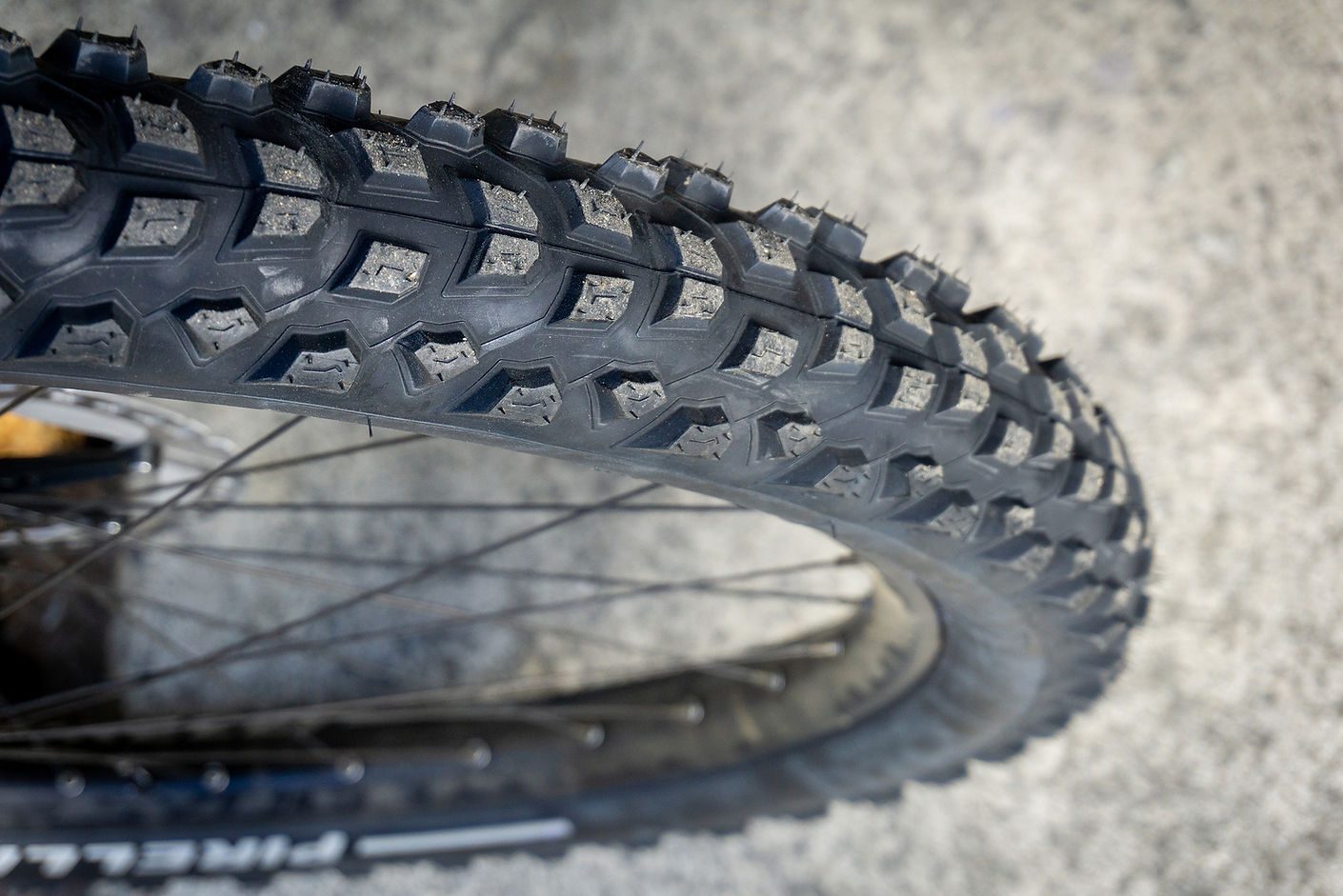
Emtbs have particular requirements when it comes to tyres, namely large volume, chunky treads and sturdier casings. The Scorpions come with a thick sidewall dubbed Hyper Wall, that isn't really explained beyond that on their website. Whatever they've done works, as I dropped pressures as low as 15PSI, with the sidewalls still feeling solid and without any squirm whatsoever under hard cornering. The front 2.6 EMTB-S tyre has massive knobs spaced well apart, and the side knobs take the bite factor to the next level with their size and toothy profile digging into anything from loose over hardpack to mud and slimey rocks. Just looking down and seeing that big boy leading the way instils some false bravado, and when you get a bit carried away with the speed it'll quickly step in to correct things as you try to wrestle the bike back on line.
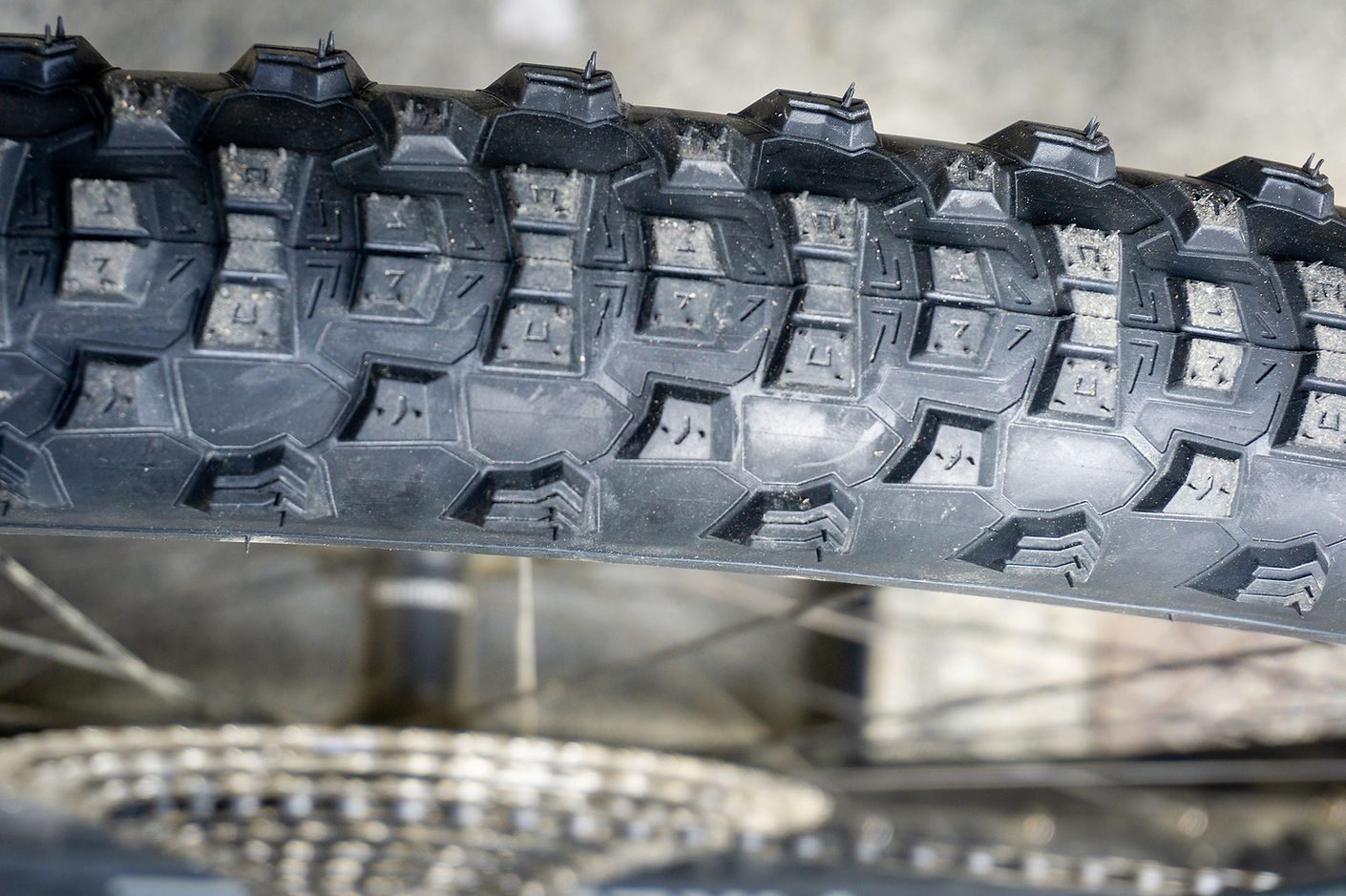
Out back there's the EMTB-R, with the same 2.6 Hyper Wall casing and Smart Grip compound (another Italian mystery that uses something called Lignin, look it up) but in a way less aggressive rear tread pattern. Tighter spaced knobs in the centre help with braking and more importantly traction, especially important if you're one to take on steep technical ups as well as downs. Wheelspin even on rutted out goat racks was negligible until the gradient got too much more for the rider than the bike. Smaller side knobs make it easy to drift the rear wheel as far as you like in corners, knowing that when you want some grip it'll be there. To say the Scorpions changed the way my bike rode would only be half the story, as the confidence they give changed the way I rode the bike too.
The set-up was painless and the tyres have held air well between rides. After around 100km of trail riding and a sniff of tar, the knobs are holding up well and look like they'll be around for a long time, as well as a hell of a gripping good time.
Distributed by FE Sports | RRP: $137
Story: Fueling the Collective Stoke
Becoming more and more entrenched in helping others improve their riding is just as addictive as improving your own, according to Emma Bawtree, former pro elite XC racer and founder of Wheel Woman and Krankin Kids in Nelson. “It’s all about the rush of seeing someone else discover their own love of a sport you love so much!” she says. Both organisations are committed to helping others improve their riding, with Wheel Women focused mostly on women, and Krankin Kids supporting the shredders of tomorrow. Despite her clear passion for encouraging others, Emma didn’t plan on a life of coaching. She was busy racing, running an adventure travel company and being a mum, when the idea of Wheel Woman was born, prompted by one of her friends.
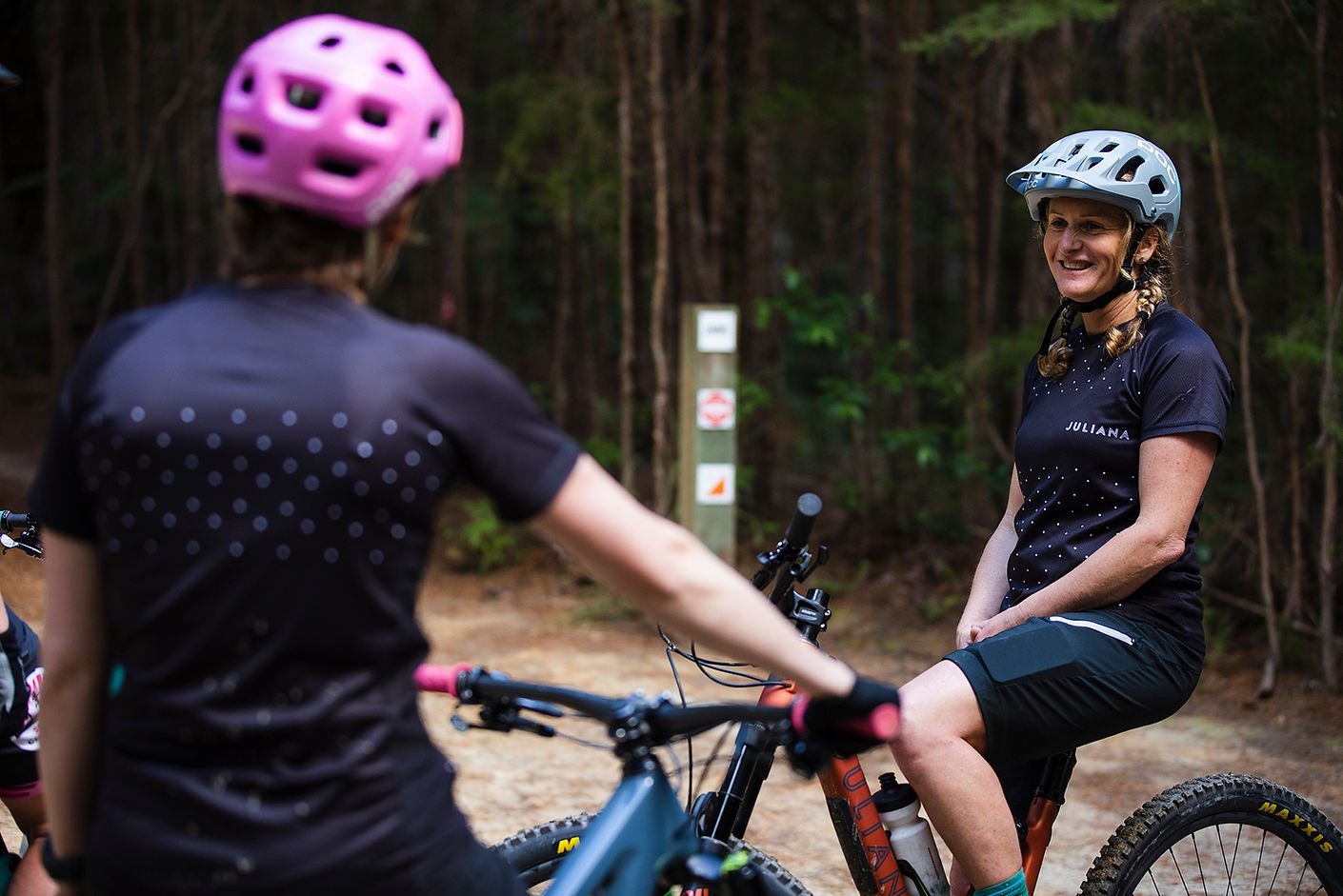
“It all started in 2012, when a friend asked me to take her and some friends out and give them some tips,” explains Emma. “A few weeks later she said the ride had made such a difference to their confidence that they wanted to do it again. By the end of that second session she had pretty much convinced me to start a proper coaching business.”
Woman 1000
Fast forward eight years and Emma is getting close to an incredibly exciting milestone: coaching her 1000th woman! “It’s been quite the journey since that first conversation,” admits Emma. “I was excited about the idea but also nervous… you know, would I run out of women to coach?” As it turns out, the answer is a resounding “no”. Since Wheel Woman began, Nelson’s reputation as a mountain biking mecca - and the trail network it offers - has only grown and, with it, interest in the sport from women. “In the first few years, I could name every woman I’d coached and recognize her on the street. As we close in on 1000 women, that’s obviously a bit harder, but I suppose that’s a good thing!” says Emma. Not only has it grown in numbers, but also in scope and region – Wheel Woman now runs workshops in Blenheim, Christchurch, Hanmer Springs and even the West Coast, as well as the annual Dirt Queens MTB Weekend.
From the Ground up
Emma says she is still largely focused on the beginner-intermediate segment, and really enjoys seeing the leaps made at that level. She says it’s often mothers getting back into biking or starting for the first time once they have some free time, or others trying to keep up with their partners or kids.
“It’s just so heartwarming to see women who are often timid, sometimes even on the verge of tears, break down those mental barriers and feel so elated because of that,” explains Emma. “I often have a few coaching sessions with the same women, and seeing their confidence grow, both on and off the bike, is incredibly inspiring.”
Apparently, those receiving coaching are equally elated. As regular, Amber Bonny, puts it: “Emma tailors her sessions to each individual. She is patient, encouraging and really gauges where you are at and how best to challenge you. This enables you to build confidence and skill without being pushed way outside of your comfort zone, and you can really feel the benefits from the coaching in every ride thereafter. Whether as an individual or in a group session, she inspires you to keep building your skills and get out there on the trails to have a blast!”
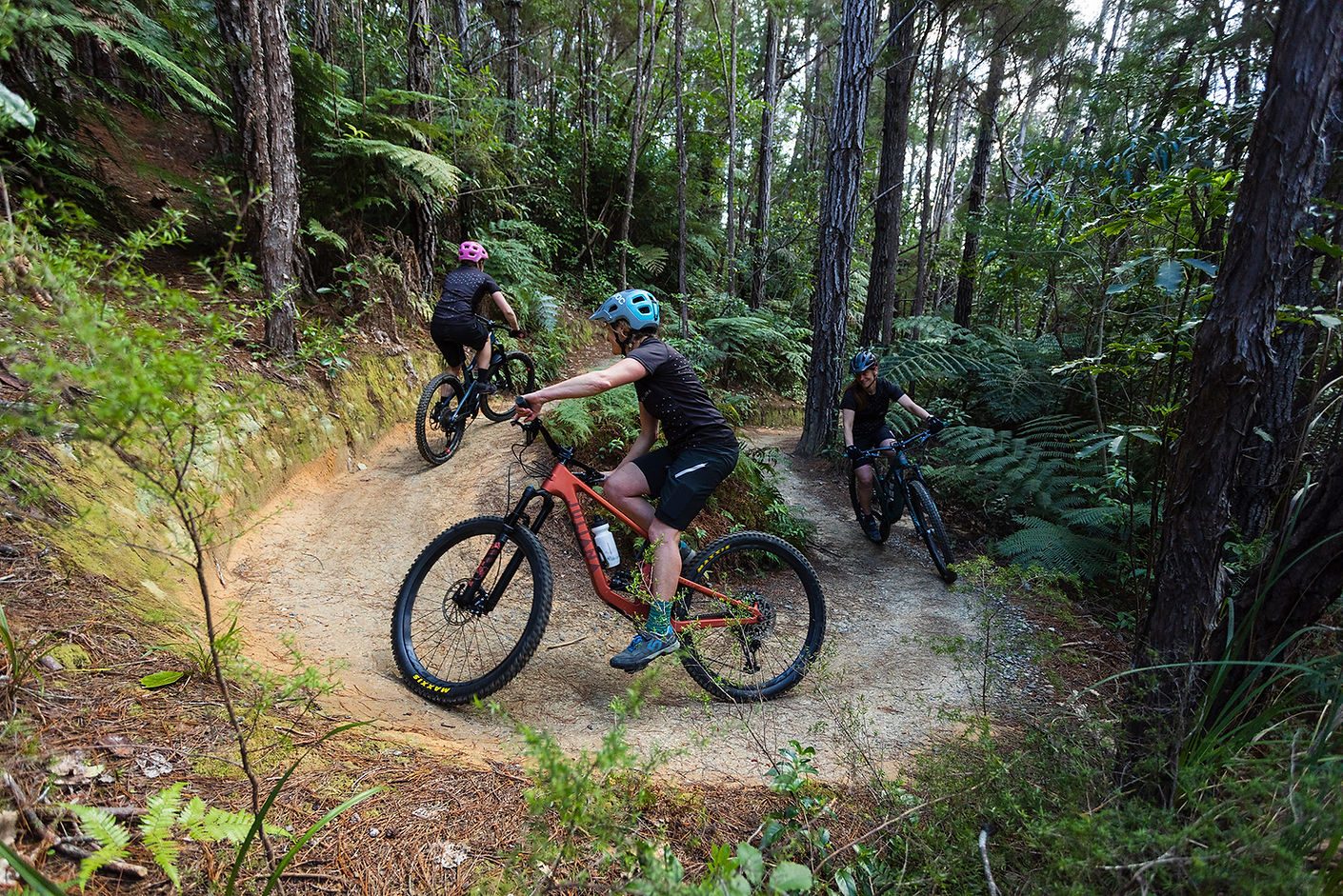
Emma says it’s really rewarding to see her coaching clients years later riding on a completely different level – something she had the chance to see firsthand recently when volunteering as a marshal, at the local Shred Like A Girl enduro. “There were 80 women racing and to turn up and see so many of the women I coached who have come so far, was just awesome.” When asked “why only women?” - Emma says it just seems to work. “In my experience, women seem to learn a lot more when you take away the testosterone,” she explains. “It’s still a very male-dominated sport so it can be intimidating for women, as most (not all!) are not as naturally confident. "They also just seem to have a lot in common, whether they’re moms or young and want to get outside. It’s all about giving them the tools and confidence to continue on their own and ride with whoever they want.”
Emma says feedback on her courses from the women, such as Louise, often reflects this: “Engaging, encouraging, confident and assertive in great balance. I found it really enjoyable, the format was perfect and it was super nice to share some collective stoke with other women in a non-judgmental space.”
The Next Generation
While coaching women is her passion, it garnered a lot of interest from parents who wanted similar coaching for their kids – thus inspiring Krankin Kids. “I got in touch with a teacher friend to work out some concepts and started with four or five coaches, one night a week, for ages 10 to 15. Now we run five days a week and coach 180 kids from ages 7 to 15 per term!” Like Wheel Woman, Krankin Kids is about growing a love for the sport and enhancing skills at the same time. Older kids who want to remain involved can do so through an apprenticeship coaching programme.
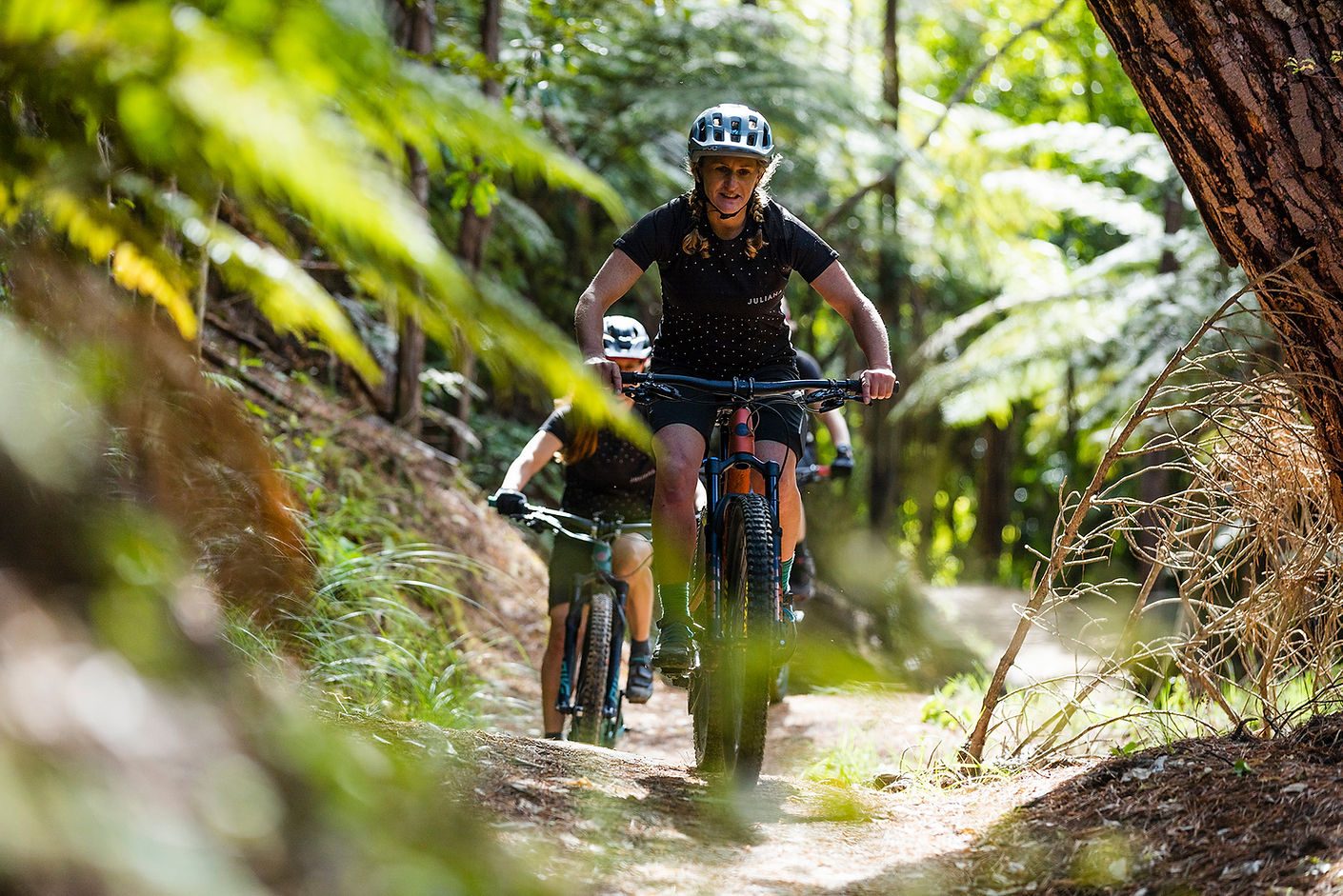
What’s Next?
Despite filling her time with coaching, being a mum and running a travel business, Emma practices what she preaches and is always looking to improve her offering. With fewer international visitors and bikepacking gaining popularity, she is looking at leading supported women-only backcountry trips on trails such as Old Ghost Road… and she promises there’s more to come!
Words: Meagan Robertson
Images: Henry Jaine
Review: 100% Accuri 2 Goggles
I was never sure why goggles were a requirement in mountain biking, but they are certainly in many rider’s kits these days. I fully understand, from my motocross days, that they stop the roost from a wildly spinning rear tyre being fired into your eyes at the speed of a bullet… but mountain bikes don't do that. Moto riders hit speeds that blur the vision and water the eyes… but mountain bikers don't usually do that. Sure, we can wear specific riding glasses to take care of those concerns, but rarely have I thought I need to wear goggles when mountain biking. After receiving a 100% Trajecta full-face helmet and these Accuri 2 goggles to review, I was interested to see if mind could be changed.
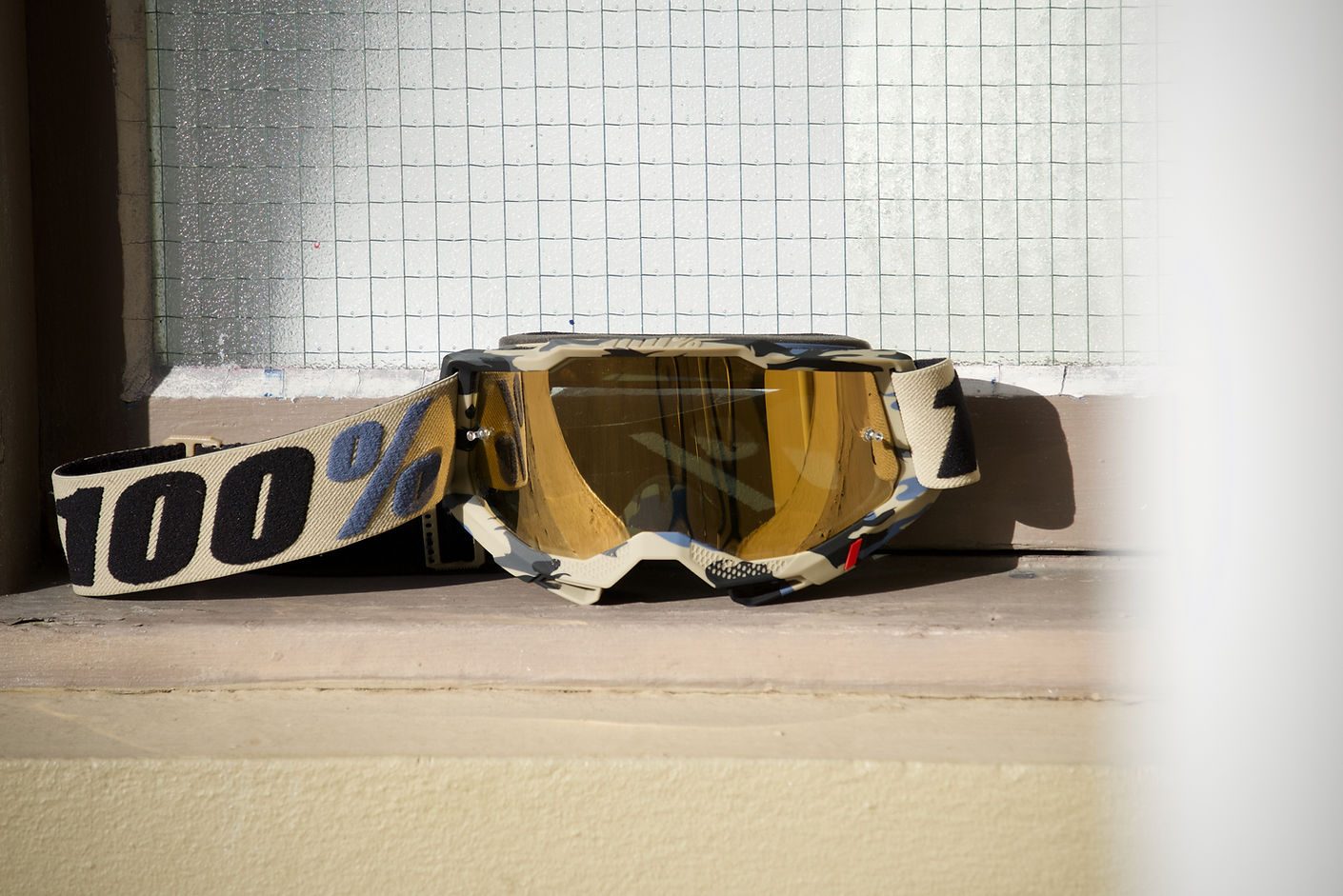
There’s no denying goggles offer better eye protection than glasses, but do we really need them? From listening to other riders, and wading through the swamp of all-knowing online forums, I discovered that a big part of it isn't just function, but fashion too. Apparently, it's not cool to wear riding glasses with a full-face helmet but, somehow, it is cool to wear goggles with a half-shell. Whack. I need to wear prescription lenses when riding, as I can't tolerate contact lenses, so whether I'm wearing a full-face or a half-shell, I really have no choice but to wear glasses. Yes, there are prescription lenses available in a number of goggles, and 100% does offer this option, but it's very expensive – especially if you need several tints for varying conditions.
So, I tried the glasses with goggles method. Wearing goggles while climbing isn't the most comfortable or should I say, breathable, especially on a slowbike (MTB). It's a little more practical if climbing on a fastbike (EMTB), but I still found that removing the goggles and slinging them around the back of my neck – while wearing my prescription riding glasses – was the better option, especially on warmer days. If the goggles are to be used for downhill sections, they have to fit over my glasses. These Accuri 2 units, despite not being a specific OTG (Over The Glasses) model, do that well. As long as there was some air flow, I didn't fog up with the double-up option, probably as the polycarbonate lens has an anti-fog treatment that lives up to its claims. 100% do offer the Accuri 2 in a OTG model, which I hope to try out, to maximise fit and function even more.
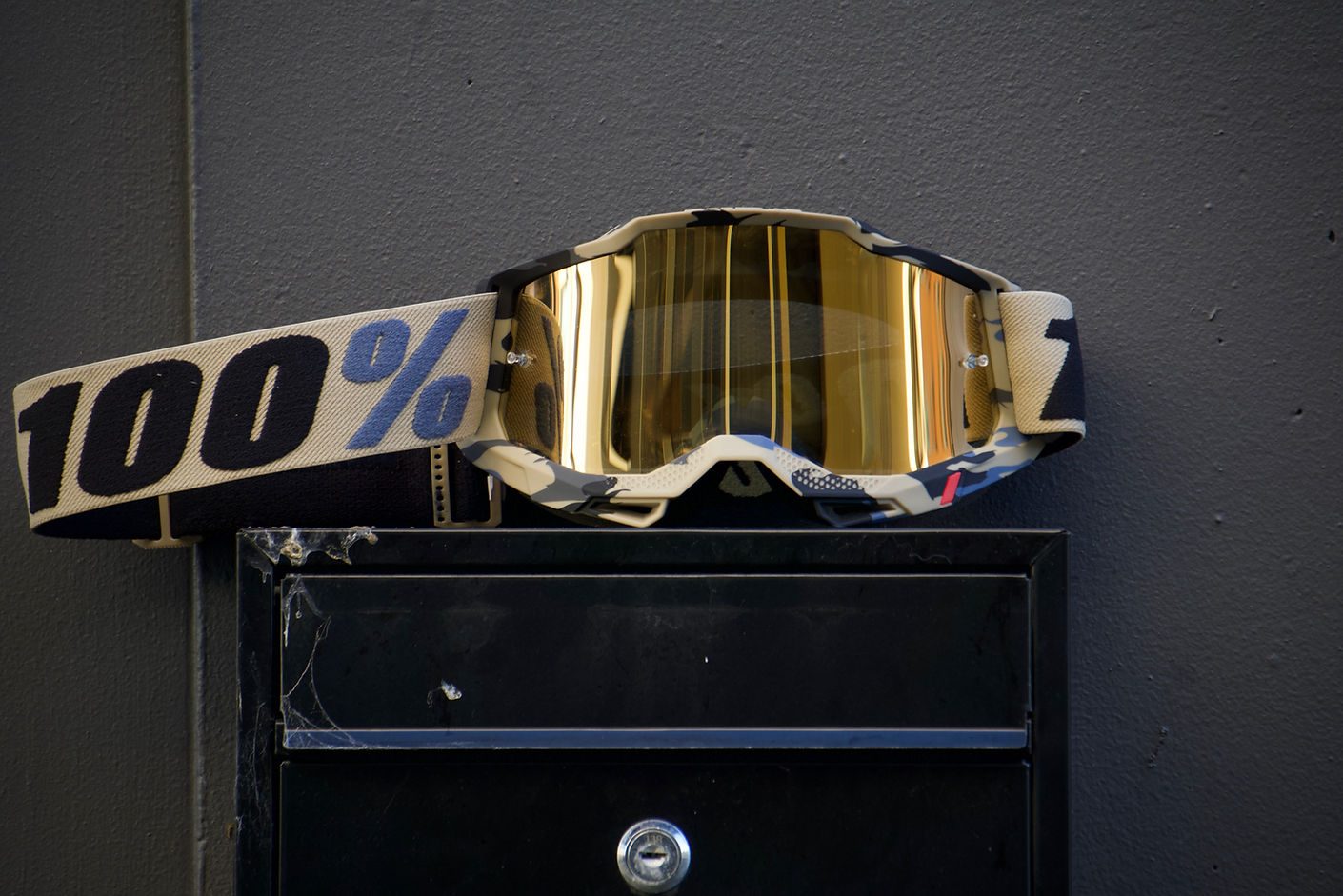
The lens my test pair came with is a reflective True Gold tinted number, and it did a good job of reducing glare on some late afternoon rides with low sun. A clear lens is also available (I think it's usually included, but ours didn't come with it). The 45mm wide strap has a silicon gripper which kept it firmly in place on the helmet, while triple-layer foam soaked up the sweat well and felt good against the skin, with no movement or irritation at all. Meanwhile, the vents did a good job of keeping condensation away.
If nothing else, wearing goggles does give you a sense of impenetrable eye protection, and a full-moto vibe, which I'm all about! I still need to figure out the ‘whys’ and ‘hows’ of it all, so cut me some slack if I'm carrying three helmets, two sets of glasses and these excellent goggles on my next ride. I'd hate to be in the wrong kit for a particular section or type of ride. Then again, perhaps I'll just put protection first, pretend I'm Cooper Webb, and give the fashionistas the middle finger.
Distributor: FE Sports
Words and Images: Brett Kennedy
Review: 100% S2 Sunglasses
In the past, cycling glasses haven’t appealed to me, but I was excited to try out the 100% S2 sunglasses when given the opportunity. After using them for the past five weeks, I'm seldom seen without them. After the signing of Peter Sagan, the popularity of 100% eyewear grew exponentially. They now offer an extensive range which covers all aspects of performance, protection, and prescription glasses.
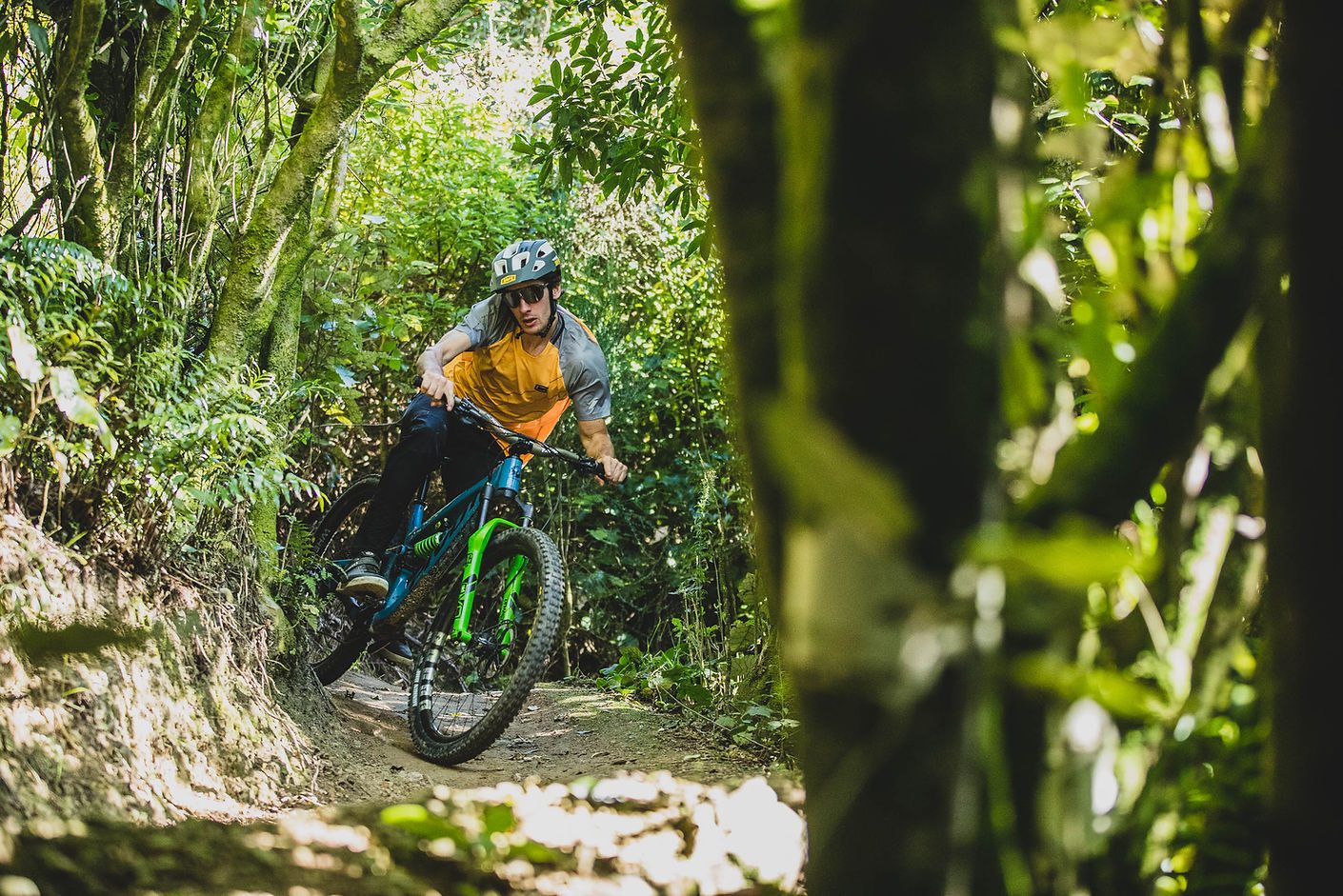
The polished glasses I've been testing came equipped with a mirrored silver lens and a back up clear lens. I have yet to need the clear lens as the mirrored one adapts to changes in light very quickly. The lens has not fogged up, and after many clumsy trail moments there are no marks on the impact resistant Hydroio lens. Initially, I ran them only on mountain bike rides but have since tried them on the road bike and even at a cyclocross race, and found the generous size and shape to keep unwanted air and mud away from my eyes. On the road and trail I've found them to make obstacles appear very sharp, almost enhancing my vision. The addition of ultra-grip rubber on the arms and nose piece meant, once they were where I wanted them, there was no movement whatsoever. I've often seen cyclists with glasses that don’t contrast well with their helmet, however these are not those; I have tested them with five different helmets from varying brands and they look amazing. A couple of times, whilst driving, I have picked them up to block the harsh sun – I’ve also received compliments on how good they look.
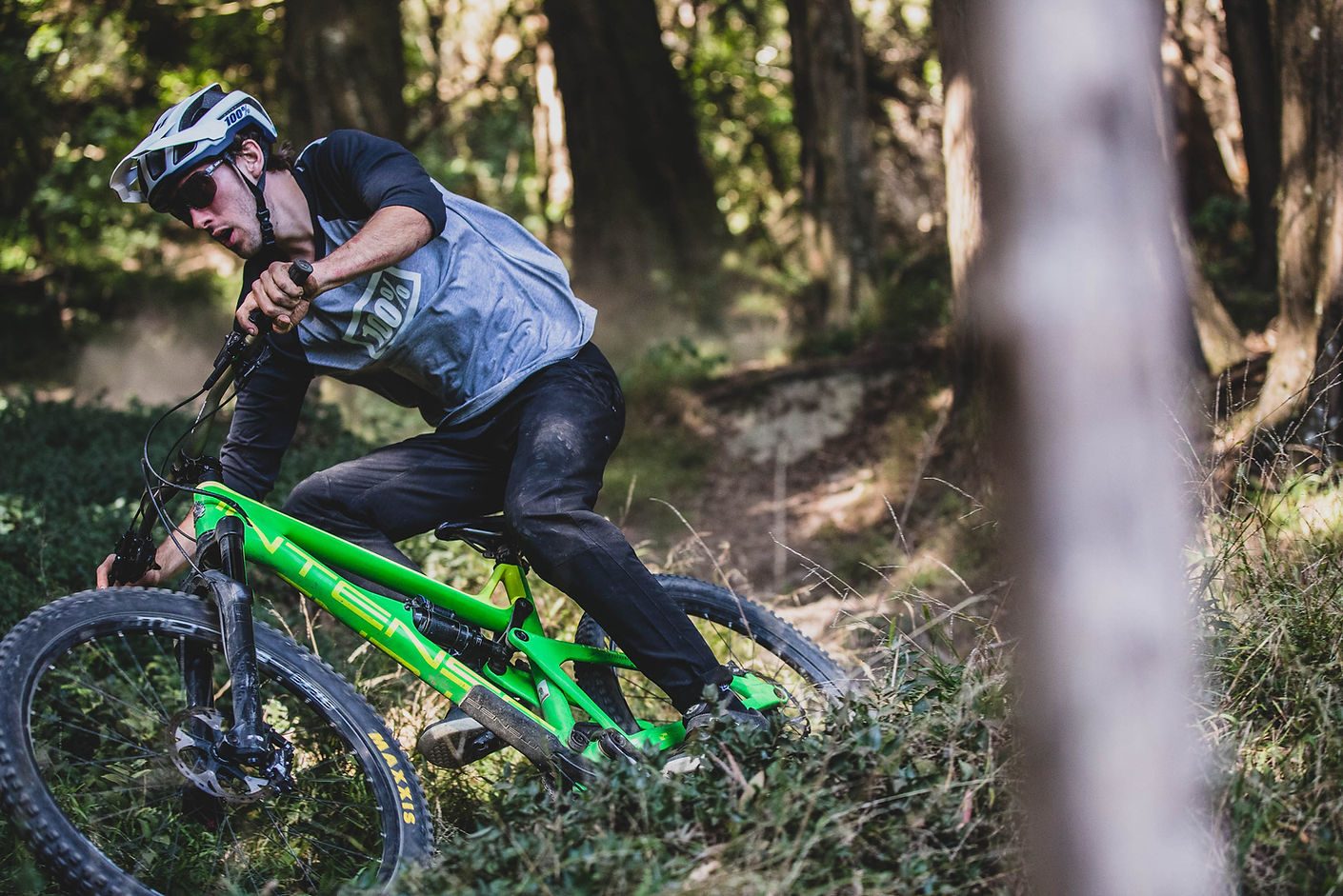
The price tag of $334 seems scary for something you think you may not need, but I can assure you these will up your steeze factor and are a good investment for a durable pair of multi-use glasses. Would I recommend these? Absolutely. If you want to stand out amongst your friends, be a style god, and keep shit out of your eyes, look no further than the 100% S2 shades.
Distributor: FE Sports
Words: Jesse Cseh
Images: Caleb Smith
Release: 2022 Kona Shonky
The Kona Shonky is back for 2022, and whilst the spec and geometry are identical to the 2021 bike, there's a new colourway and a video to celebrate the update shot with style master Carlos Langelaan. Check it out below!


